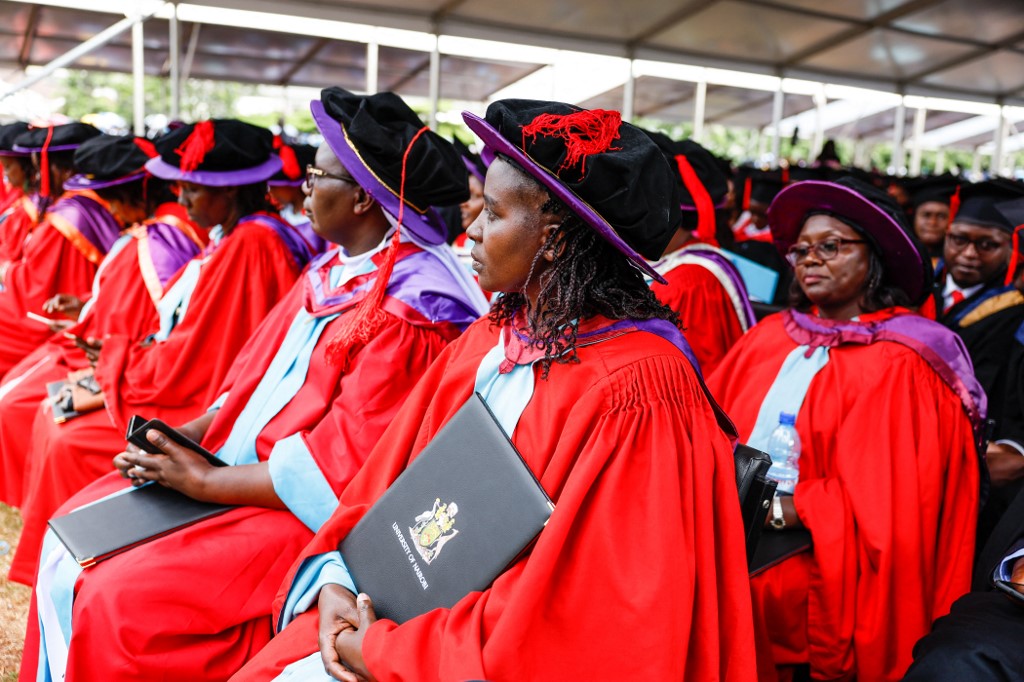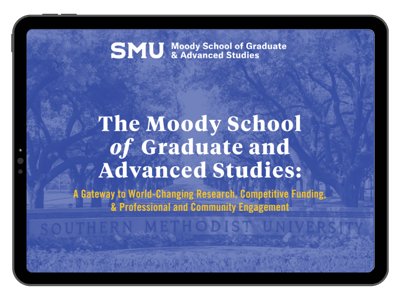PhD, Professor, and Postdoc Salaries in the United States
The United States is home to several of the world’s best universities making it a top destination for international researchers. Here’s a breakdown of the most common American job titles and their associated average annual salaries. All salary statistics in this article are in American Dollars (USD) and are pre-tax.
PhD Student
A Master’s degree is not always required to do a PhD in the US. Several top universities offer direct entry PhD programs. An American PhD begins with two to three years of coursework in order to pass qualifying exams. During this time doctoral students are able to develop their research interests and hone in on their thesis topic. They will then write a thesis proposal which must be approved before they can start their dissertation. Most programs require PhD students to gain two to three years of teaching experience as well, either by leading their own class or as teaching assistants for a professor. It takes an average of six years to earn a PhD in the US.
Unlike some European countries, there is no mandated minimum salary or national salary scale for PhD students in the US. PhD students ear n between $ 15,000 and $30,000 a year depending on their institution, field of study, and location. This stipend can be tax-free (if it is a fellowship award) or taxable (if it is a salary e.g from a teaching position). American PhD students are usually only paid for nine months of the year but many programs offer summer funding opportunities. A PhD funding package will also include a full or partial tuition waiver.
After earning a PhD, many researchers go on to a postdoc. A postdoc is a continuation of the researcher’s training that allows them to further specialize in a particular field and learn new techniques. Postdoc positions are usually two to three years and it is not unusual to do more than one postdoc. There is no limit on the number of years you can be a postdoc in the US. The average salary (2023 ) for postdocs in the US is $61,143 per year.
A lecturer is a non-tenure-track teaching position. They often have a higher teaching load than tenure track-faculty and no research obligations. These positions are more common in the humanities or as foreign language instructors. Lecturers hold advanced degrees, though not always PhDs. The average salary for a full time lecturer in 2021-2022 according to the American Association of University Professors was $69,499.
Assistant Professor
This is the start of the tenure track. An assistant professor is responsible for teaching, research, and service to the institution (committee membership). Assistant professors typically teach two to four courses per semester while also supervising graduate students. They are also expected to be active researchers and publish books, monographs, papers, and journal articles to meet their tenure requirements. The average salary for assistant professors in 2021-2022 was $85,063 according to the American Association of University Professors .
Associate Professor
An assistant professor who has been granted tenure is then promoted to an associate professor. An associate professor often has a national reputation and is involved in service activities beyond their university. The average salary for associate professors in 2021-2022 was $97,734 according to the American Association of University Professors .
This is the final destination of the tenure track. Five to seven years after receiving tenure, associate professors go through another review. If they are successful, they are promoted to the rank of professor (sometimes called full professor). Professors usually have a record of accomplishment that has established them as an international or national leader in their field. The average salary for professors in 2021-2022 according to the American Association of University Professors was $143,823.

Discover related jobs
Discover similar employers
Accelerate your academic career
Practical Advice for Moving to Germany to Study or Research
Everything you need to know about moving to Germany to research or study...
Top 10 Postdoc Interview Questions
Here’s an idea of the kinds of questions you can expect during your post...
Fight Procrastination
Here are our best tips to stop procrastinating and get to work.
How to Choose Your PhD Supervisor
Your PhD supervisor will be one of the most influential people in your a...
The 5 Most Important Questions You’ll Be Asked During a PhD Interview
These are the five most important questions you will be asked in a PhD i...
5 Reasons to Work at the University of Jyväskylä
The University of Jyväskylä is one of Finland’s top academic institution...
Jobs by field
- Electrical Engineering 195
- Machine Learning 159
- Programming Languages 150
- Artificial Intelligence 142
- Molecular Biology 138
- Electronics 131
- Mechanical Engineering 127
- Materials Engineering 124
- Cell Biology 120
- Engineering Physics 106
Jobs by type
- Postdoc 323
- Assistant / Associate Professor 140
- Professor 100
- Researcher 98
- Research assistant 89
- Engineer 85
- Lecturer / Senior Lecturer 74
- Management / Leadership 58
- Tenure Track 33
Jobs by country
- Belgium 353
- Morocco 122
- Switzerland 109
- Netherlands 109
- Luxembourg 67
Jobs by employer
- KU Leuven 139
- Mohammed VI Polytechnic Unive... 126
- Ghent University 78
- University of Luxembourg 67
- ETH Zürich 52
- KTH Royal Institute of Techno... 51
- Karolinska Institutet 40
- Silicon Austria Labs (SAL) 33
- University of Antwerp 31
Jump to navigation
Search form

The Graduate School
- Faculty/Staff Resources
- Programs of Study Browse the list of MSU Colleges, Departments, and Programs
- Graduate Degree List Graduate degrees offered by Michigan State University
- Research Integrity Guidelines that recognize the rights and responsibilities of researchers
- Online Programs Find all relevant pre-application information for all of MSU’s online and hybrid degree and certificate programs
- Graduate Specializations A subdivision of a major for specialized study which is indicated after the major on official transcripts
- Graduate Certificates Non-degree-granting programs to expand student knowledge and understanding about a key topic
- Interdisciplinary Graduate Study Curricular and co-curricular opportunities for advanced study that crosses disciplinary boundaries
- Theses and Dissertations Doctoral and Plan A document submission process
- Policies and Procedures important documents relating to graduate students, mentoring, research, and teaching
- Academic Programs Catalog Listing of academic programs, policies and related information
- Traveling Scholar Doctoral students pursue studies at other BTAA institutions
- Apply Now Graduate Departments review applicants based on their criteria and recommends admission to the Office of Admissions
- International Applicants Application information specific to international students
- PhD Public Data Ph.D. Program Admissions, Enrollments, Completions, Time to Degree, and Placement Data
- Costs of Graduate School Tools to estimate costs involved with graduate education
- Recruitment Awards Opportunities for departments to utilize recruitment funding
- Readmission When enrollment is interrupted for three or more consecutive terms
- Assistantships More than 3,000 assistantships are available to qualified graduate students
- Fellowships Financial support to pursue graduate studies
- Research Support Find funding for your research
- Travel Funding Find funding to travel and present your research
- External Funding Find funding outside of MSU sources
- Workshops/Events Find opportunities provided by The Graduate School and others
- Research Opportunities and programs for Research at MSU
- Career Development Programs to help you get the career you want
- Graduate Educator Advancement and Teaching Resources, workshops, and development opportunities to advance your preparation in teaching
- Cohort Fellowship Programs Spartans are stronger together!
- The Edward A. Bouchet Graduate Honor Society (BGHS) A national network society for students who have traditionally been underrepresented
- Summer Research Opportunities Program (SROP) A gateway to graduate education at Big Ten Academic Alliance universities
- Alliances for Graduate Education and the Professoriate (AGEP) A community that supports retention, and graduation of underrepresented doctoral students
- Recruitment and Outreach Ongoing outreach activities by The Graduate School
- Diversity, Equity, and Inclusion Funding Funding resources to recruit diverse students
- Graduate Student Organizations MSU has over 900 registered student organizations
- Grad School Office of Well-Being Collaborates with graduate students in their pursuit of their advanced degree and a well-balanced life
- Housing and Living in MI MSU has an on and off-campus housing site to help find the perfect place to stay
- Mental Health Support MSU has several offices and systems to provide students with the mental health support that they need
- Spouse and Family Resources MSU recognizes that students with families have responsibilities that present challenges unique to this population
- Health Insurance Health insurance info for graduate student assistants and students in general at MSU
- Safety and Security MSU is committed to cultivating a safe and inclusive campus community characterized by a culture of safety and respect
- Why Mentoring Matters To Promote Inclusive Excellence in Graduate Education at MSU
- Guidelines Guidelines and tools intended to foster faculty-graduate student relationships
- Toolkit A set of resources for support units, faculty and graduate students
- Workshops Workshops covering important topics related to mentor professional development
- About the Graduate School We support graduate students in every program at MSU
- Strategic Plan Our Vision, Values, Mission, and Goals
- Social Media Connect with the Graduate School!
- History Advancing Graduate Education at MSU for over 25 years
- Staff Directory
- Driving Directions
PhD Salaries and Lifetime Earnings
PhDs employed across job sectors show impressive earning potential:
“…[T]here is strong evidence that advanced education levels continue to be associated with higher salaries. A study by the Georgetown Center on Education and the Workforce showed that across the fields examined, individuals with a graduate degree earned an average of 38.3% more than those with a bachelor’s degree in the same field. The expected lifetime earnings for someone without a high school degree is $973,000; with a high school diploma, $1.3 million; with a bachelor’s degree, $2.3 million; with a master’s degree, $2.7 million; and with a doctoral degree (excluding professional degrees), $3.3 million. Other data indicate that the overall unemployment rate for individuals who hold graduate degrees is far lower than for those who hold just an undergraduate degree.” - Pathways Through Graduate School and Into Careers , Council of Graduate Schools (CGS) and Educational Testing Service (ETS), pg. 3.
Average salaries by educational level and degree (data from the US Census Bureau, American Community Survey 2009-2011, courtesy of the Georgetown University Center on Education and the Workforce):
|
|
| |||||||
|
|
|
|
|
|
|
|
| |
|
|
|
|
|
|
|
|
|
|
| AGRICULTURE and NATURAL RESOURCES | 52000 | 63000 | 79000 | 83000 | 9385 | 2174 | 620 | 571 |
| ARCHITECTURE | 63000 | 71000 | 78000 | 73000 | 3597 | 1470 | 294 | 68 |
| ARTS | 46000 | 55000 | 65000 | 67000 | 17693 | 4257 | 579 | 447 |
| BUSINESS | 62000 | 83000 | 102000 | 94000 | 137905 | 32908 | 5392 | 1201 |
| COMMUNICATIONS and JOURNALISM | 50000 | 61000 | 84000 | 72000 | 28938 | 6479 | 1260 | 473 |
| COMPUTERS and MATHEMATICS | 73000 | 90000 | 90000 | 104000 | 30666 | 11873 | 986 | 1557 |
| CONSUMER SERVICES and INDUSTRIAL ARTS | 63000 | 84000 | 94000 | 83000 | 4204 | 584 | 65 | 33 |
| EDUCATION | 42000 | 56000 | 63000 | 73000 | 39185 | 30819 | 2371 | 1397 |
| ENGINEERING | 79000 | 101000 | 104000 | 107000 | 44297 | 22903 | 2090 | 3831 |
| HEALTH | 63000 | 77000 | 103000 | 98000 | 32807 | 9492 | 4073 | 2051 |
| HUMANITIES and LIBERAL ARTS | 47000 | 59000 | 99000 | 69000 | 38955 | 19013 | 7414 | 3408 |
| LAW AND PUBLIC POLICY | 52000 | 65000 | 89000 | 84000 | 14350 | 3049 | 994 | 192 |
| PSYCHOLOGY and SOCIAL WORK | 43000 | 56000 | 83000 | 78000 | 23192 | 16036 | 2945 | 2624 |
| RECREATION | 45000 | 58000 | 75000 | 73000 | 5004 | 1493 | 310 | 199 |
| SCIENCE--LIFE/PHYSICAL | 54000 | 73000 | 125000 | 89000 | 28075 | 14646 | 13187 | 9868 |
| SOCIAL SCIENCE | 57000 | 75000 | 105000 | 90000 | 32617 | 14167 | 7566 | 1971 |
The Bureau of Labor and Statistics reports higher earnings and lower unemployment rates for doctoral degree holders in comparison to those with master’s and bachelor’s degrees:
According to national studies, more education translates not only to higher earnings, but also higher levels of job success and job satisfaction:
“Educational attainment – the number of years a person spends in school – strongly predicts adult earnings, and also predicts health and civic engagement. Moreover, individuals with higher levels of education appear to gain more knowledge and skills on the job than do those with lower levels of education and they are able, to some extent, to transfer what they learn across occupations.” - Education for Life and Work (2012), National Research Council of the National Academies, pg. 66.

- Call us: (517) 353-3220
- Contact Information
- Privacy Statement
- Site Accessibility
- Call MSU: (517) 355-1855
- Visit: msu.edu
- MSU is an affirmative-action, equal-opportunity employer.
- Notice of Nondiscrimination
- Spartans Will.
- © Michigan State University
8 best PhDs that offer the highest stipends

The best PhDs not only open the gates to knowledge but also offer some of the most generous stipends to help you achieve your dream. These stipends are not just numbers; they are the lifeboat allowing you to dive headfirst into your studies without worrying about the financial tides.
Think of the great minds that have treaded the PhD path before you – Marie Curie, Albert Einstein and Martin Luther King Jr. The secret to their success wasn’t just their brilliance; it was the support they received during their PhD journeys.
A stipend can be the catalyst for greatness, allowing you to focus on your research, collaborate with brilliant minds, and turn your academic dreams into reality.

The best PhDs give you more than just a qualification. It acts as a catalyst to greatness.
Types of PhD stipends
When it comes to stipends, there are two main types: financial and non-financial. Financial stipends are a helping hand for students, given without needing any specific work in return.
They appear as financial assistance on your statement at the end of the year.
On the flip side, there are stipends given in exchange for the work you put in at the university. These aren’t considered financial aid; instead, they’re like salaries
You might be wondering if your stipend is subject to taxation. Well, it depends on the type. If it’s a financial stipend, it’s generally not taxable. It’s like a gift to help you out.
However, if your stipend is in exchange for your university efforts, like work or research, it’s considered income and is subject to taxation.

The best PhDs have great stipends — which you should treat as a package. Source: AFP
PhD stipends: It’s a package
Your PhD stipend is made up of several important components to support you through your academic journey.
The living stipend is the main part, covering your accommodation, food, transportation and other daily needs.
It’s the primary source of financial support, and how much you get can vary based on factors like location, school, major and cost of living.
The tuition waiver or fellowship is a significant perk considering the often hefty costs of a PhD education, especially in fields like Chemistry or other STEM subjects.
Health insurance is another crucial part of the package, ensuring you have access to affordable medical care to keep you healthy and productive.
Then there’s the research grant or funding, providing extra money for things like textbooks, research materials, and conference fees.
As you delve into your academic journey, you might also find yourself as a teaching assistant (TA) or research assistant (RA), gaining work experience and building valuable professional connections.
So, your PhD stipend isn’t just about the financial support – it’s a comprehensive package designed to nurture and propel you forward in your academic pursuits.

The most powerful people in the world listen to those with the best PhDs. In this photo, India’s Prime Minister Narendra Modi and US First Lady Jill Biden listen to Anchal Sharma, a PhD candidate at the Indian Institute of Technology. Source: AFP
PhD stipends: More than just financial aid
It’s important to treat your PhD stipend as something more than just scholarship money or salary.
Consider investing in specialised training courses or workshops relevant to your field.
Use your stipend to enrol in programmes that deepen your expertise and introduce you to the latest trends.
Think of it as adding layers to your professional skillset, making you a sought-after expert in your field.
Another useful way to make good use of your PhD stipend is by attending conferences and networking events.
Allocate registration fees, travel and accommodation funds to immerse yourself in a sea of knowledge and connections.
Conferences are like treasure troves of insights, letting you learn from industry leaders and exchange ideas with peers.
Networking at these events can open doors to collaborations, job opportunities and a broader understanding of your field.
Your stipend is a golden ticket, allowing you to actively participate in your professional community and stay updated on cutting-edge developments.
Salary vs stipend
Your salary is like a regular paycheck you get for your job – it’s consistent, predictable and typically based on the hours you work or the tasks you complete.
It’s your stable income, like a steady river flowing into your bank account.
On the other hand, a stipend is more like a fund for a specific purpose, usually tied to education, research or training.
It’s not your regular 9-to-5 wage. It’s an allowance to support you in certain activities, such as pursuing a degree, researching, or attending professional development opportunities.
While a salary is your everyday bread and butter, a stipend is more like the extra toppings – there for a specific reason and not necessarily a routine.
So, who gets to hop on the stipend train? Usually, it’s candidates who are engaged in specific activities that need a bit of financial backing.
Students diving into research, interns honing their skills, or anyone pursuing specialised training are likely candidates.
Stipends often aim to support learning, growth or projects rather than being your everyday paycheck. It’s like a boost for those dedicating their time and effort to something beyond their regular work.
So, if you’re on a mission to deepen your knowledge, contribute to research or enhance your skills in a particular field, chances are you could receive a stipend.
When it comes to PhD programmes, the pay and stipends can vary . Generally, STEM (Science, Technology, Engineering, and Mathematics) PhD programmes offer higher stipends than other fields.
For example, in the US, institutions like MIT and Stanford are known for generous stipends for STEM candidates. These stipends often cover tuition, living expenses and even healthcare.

The best PhDs can help you develop valuable transferrable skills which are valuble in the working world. Source: ETX
1. Stanford University
Stanford University is renowned for having the best PhD programmes in the world. This is mainly due to the fact that it offers one of the highest stipends globally, securing its position as a top-tier institution for doctoral candidates.
In the 2020/2021 academic year, PhD students at Stanford University received a stipend or teaching assistantship of US$45,850 , marking it the world’s highest-paid PhD stipend.
Newly admitted PhD candidates automatically qualify for financial assistance for up to five years, provided they maintain a good academic record and meet the stipend requirements.
This support of fellowship salary, research or teaching assistantship showcases the university’s dedication to offering one of the most competitive PhD stipends.
Stipends are distributed shortly after students meet the minimum enrolment requirements, and any obligatory expenses, such as university housing rent, are deducted before the stipend is issued.

Earning a PhD can be costly both in terms of time and money, and it may take several years to complete a successful doctoral programme. Source: ETX
2. Princeton University
Embarking on a PhD at Princeton University promises academic excellence — and positions you among recipients of one of the highest-paid stipends in the US.
In February, The Daily Princetonian reported that the Princeton Graduate Students United (PGSU) has announced that the university will raise some graduate student stipends by US$5,000 in the 2023/24 academic year.
This made the annual stipend rate for this academic year b etween US$47,880 and US$50,400 .
If you’re a new incoming graduate student, you’ll be paid your first fellowship stipend in full for the month of August .

The best PhDs can help students build relationships with professionals in their field, learn about job opportunities and gain insight into industry trends and best practices. Source: ETX
3. University Of South Carolina
The University of South Carolina is a top institution with one of the best PhD programmes, offering some of the highest stipends to its students.
From 2022, the university’s minimum total stipend has been US$34,000.
This makes the minimum monthly rate of at least US$3,778 for programmes that operate on a nine-month schedule and US$2,834 for those on a 12-month schedule.
There’s a “Provost Fellowship Top Off” valued at US$2,000, bringing a student’s stipend to at least US$36,000.
The university’s commitment extends to various scholarships, including the IRIX/David L. Coffen Fellowship and the Jerome D. Odom Fellowship, both in the field of chemistry.
The highest-qualified candidates are considered for Presidential Fellowships.
4. Rice University
Rice University stands out by offering departmental stipends for qualified PhD candidates — amounting up to US$40,000 per year .
Candidates earn this by working as a research/teaching assistant for an assigned faculty member while maintaining full-time student status and continue making satisfactory progress toward their PhD.

The best PhDs will help you learn about yourself, about others and about the world around you. Source: AFP
5. University of Houston
With an annual stipend of US$31,000 annually , the financial support provided at the University of Houston is substantial.
The Graduate Tuition Fellowship (GTF) further enhances the financial package for eligible students, covering tuition and fees, resulting in a net annual benefit of US$20,800.
Meeting a 3.00 grade point average and working as a graduate assistant are prerequisites for GTF eligibility, proving the university’s dedication to maintaining academic excellence among its doctoral candidates.
The fellowship covers nine semester credit hours (SCH) in the fall and spring semesters and six in the summers.
6. Ohio University
Ohio University’s financial support for PhD students is among the most generous in the country –surpassing over 1,000 other universities.
Here, s tipends come in different forms. Examples are teaching assistantships, research assistantships and graduate assistantships.
At the School of Communication Studies , for example, eight to 12 new students are offered graduate assistantships that provide a full tuition waiver and a stipend of approximately US$16,100 per academic year.

A PhD degree holds high value in the job market as well as in the research world. Source: AFP
7. Boston University
At Boston University, all PhD students in good standing are guaranteed the following:
- five years of stipend support
- 100% tuition scholarship
- a health insurance credit
How much? That varies by PhD programmes but its website states a range from US$27,318 for eight months to US$40,977 for 12 months for the 2024/25 academic year.
8. Cornell University
For the 2023/24 academic year, Cornell graduate assistantship and fellowship stipends grew by 8% .
This made the minimum 12-month assistantship rate US$43,326 and increased the minimum nine-month academic year stipend to US$32,494.
Here, a graduate assistantship refers to “ an academic appointment requiring 15 to 20 hours a week , averaging no more than 15 hours per week for the base stipend as established by the Board of Trustees.” They receive full tuition credit and a stipend.
Meanwhile, a fellowship refers to an “arrangement in which financial support is given to a graduate student to pursue his or her degree without any obligation on the part of the student to engage in teaching and/or research in furtherance of the university’s academic mission.”
Popular stories
On a budget check out these 6 uk universities with affordable tuition.

Pride Month 2024: The loudest, proudest business schools

Best movies about smart people to help you figure out your university, career, and life

Beyond South Africa: The best African countries to visit for summer break

5 countries offering the highest PhD stipends

10 top UK universities accepting 2024 applications

The Stanford grad helping international students get into top US and UK unis
Want to Get your Dissertation Accepted?
Discover how we've helped doctoral students complete their dissertations and advance their academic careers!
Join 200+ Graduated Students

Get Your Dissertation Accepted On Your Next Submission
Get customized coaching for:.
- Crafting your proposal,
- Collecting and analyzing your data, or
- Preparing your defense.
Trapped in dissertation revisions?
Phd stipends: all your questions answered, published by steve tippins on june 26, 2022 june 26, 2022.
Last Updated on: 2nd February 2024, 03:04 am
What are PhD stipends? When you enter a PhD program, you can also get financial support in the form of tuition reduction, free tuition, and PhD stipends. That means compensation for work you’ll do, such as teaching or being a research assistant. Typically, traditional, face-to-face universities and PhD programs—as opposed to online programs from non-traditional schools—will compensate you for being a PhD student.
Do All PhD Students Get a Stipend?
Not all PhD students get stipends. However, most students in traditional programs do get stipends because these are full-time programs that require full-time attention, if not more.
It’s very difficult to keep a job of any kind and be in a full-time doctoral program. In order to have students at an institution, the institution has to make up for the income students lose by not working. PhD students are valuable labor for institutions because it costs less to pay them to teach classes and do research support than someone who has already earned a PhD .

What Is a Good Stipend for a PhD Student?
The average phd stipend.
The average annual stipend in the United States ranges between about $23,000 and $33,000 per year. You’re not going to get rich as a PhD student on one of these stipends, but you can survive.
The Highest PhD Stipend
The highest PhD stipends that most students can get are around $30,000 to $33,000. Interestingly, stipends vary by discipline. The higher stipends tend to be in disciplines where it’s harder to find doctoral students or easier to find PhD jobs.
Education or musicology will have a stipend below $20,000 on average, and there aren’t a lot of jobs for graduates in these disciplines. However, if you were to look at something like biomedical engineering, the stipend would probably be around $33,000.
There is a factor of supply and demand that goes into stipends, and these are averages across the US. They also vary slightly by institution.
Is a PhD Stipend Enough to Live On?

When you evaluate whether a PhD stipend statement is enough to live on, first think about where you’re going to school. Would $24,000 allow you to survive on your own in New York City? It would be really difficult to find someplace to rent under $2,000 a month. If you don’t have a strong desire to eat, maybe you could get by on something like that.
On the other hand, if you are somewhere like Little Rock, Arkansas, where rent might be $600 a month, then you have $1,400 left for other things like food. It might be possible there. Many doctoral students share apartments and have roommates to make it easier to survive financially.
Can I Work While Doing a PhD?
You may be able to work a little bit while doing a PhD, though it’s very hard to have time to do much else besides focus on your degree. Some people come from previous jobs and can continue consulting. Some faculty members run consulting businesses and employ students to do more work than the stipend has them assigned to do. Just be aware that if you start making outside work a priority, eventually your stipends will go away.
Is a PhD Stipend Taxable?

We aren’t qualified to give tax advice, but in most cases stipends are considered taxable income to the doctoral student.
How Can PhD Students Earn Money Besides Their Stipend?
There are ways doctoral students can earn money outside of their PhD student stipend . Some doctoral students tutor students on the side. It used to be you could sell textbooks back to the manufacturer, but that’s become increasingly rare now that most textbooks are going electronic.
There are other opportunities like consulting based on previous contacts or working along with other faculty members to help them in their projects.
In many cases, there are grants that you might receive in addition to your stipend. Apply for grants such as dissertation-writing grants or grants aligned with your demographic background or area of interest. Check with your institution’s financial aid office and with professional associations for grants.
How Often Is a PhD Stipend Paid?

PhD stipends are paid based on your university’s compensation schedule. If your university pays every two weeks, you’ll be paid every two weeks. If it pays once or twice a month, you’ll be paid once or twice a month.
Do PhD Stipends Increase Each Year?
Don’t count on a PhD stipend increasing every year. Universities have vast bureaucracies, and doctoral students are usually low on the pole of influence. If you get a stipend, assume that it will stay at that level.

Be sure to also check the maximum duration of a PhD stipend. Some institutions have limits, so be aware if the limit is less than the average time it takes someone to complete a PhD.
Final Thoughts
A PhD stipend is a great thing. It allows you to keep living, albeit barely, while digging deep into your preferred area of interest. In most cases and locations, it’s high enough to subsist but low enough that you don’t want to hang around at that level for a long time.
Steve Tippins
Steve Tippins, PhD, has thrived in academia for over thirty years. He continues to love teaching in addition to coaching recent PhD graduates as well as students writing their dissertations. Learn more about his dissertation coaching and career coaching services. Book a Free Consultation with Steve Tippins
Related Posts

Dissertation
Phd by publication.
PhD by publication, also known as “PhD by portfolio” or “PhD by published works,” is a relatively new route to completing your dissertation requirements for your doctoral degree. In the traditional dissertation route, you have Read more…

What Does Ph.D. Stand For?
“What does Ph.D. stand for?” This is a question that can be answered several different ways. First of all, typically Ph.D. stands for doctor or doctorate in philosophy. I know that can be a little Read more…

A Professor’s Top 3 Pieces of Advice for Ph.D. Students
When it comes to getting a Ph.D., there is no one-size-fits-all approach to ensuring success in graduate school. Every student must find their own path to navigating the most rigorous academic experience that most people Read more…
PhD Stipend in the US: Do All Students get it?
In short, not all PhD students in the US receive stipends. In reality, Ph.D. students’ financial situations in the US range from those ‘receiving full tuition waivers and generous stipends’ to others ‘receiving neither tuition waivers nor stipends.’
Think of your Ph.D. as a full-time job. Treat your Ph.D. offer letter like a job contract. So, it’s vital to discuss all the money matters with your potential department or advisor before committing. Knowledge is truly power!
Table of Contents
Average phd stipend in the us.
For instance, fields like Electrical Engineering and Computer Science tend to offer a higher average stipend of around $28,632, whereas areas like Musicology typically fall on the lower end, with an average stipend of approximately $16,271.
Can You get a fully funded PhD in the USA?
Absolutely, but not every Ph.D. program in the US falls under the ‘fully funded’ category. While many Ph.D. programs do indeed offer comprehensive funding covering tuition, fees, and a stipend, the definition of ‘fully funded’ may vary . Therefore, it’s crucial to carefully review the details and grasp the extent of coverage.
Typically, financial support such as a Ph.D. fee waiver, living stipend, and health insurance is offered with certain requirements, like participating in a teaching assistantship. Ph.D. students may need to allocate some funds from their own pockets for: (a) actual tuition fees if not entirely waived, (b) the true cost of living, especially if the Ph.D. stipend falls short of covering living expenses in the area.
How are PhD students funded in the US?
It’s a mix of putting in the effort, filling out applications, and a bit of good luck to get that funding!
Pros and Cons of Each Funding Type
| Real-world research experience. | Significant time commitment. | |
| Stipend provides financial support. | Balancing research with personal studies can be challenging. | |
| Gain teaching experience. | Juggling teaching duties with personal academic workload. | |
| Stipend helps with finances. | Classroom management might be challenging initially. | |
| Covers tuition and living costs. | Highly competitive to secure. | |
| Adds prestige to your academic profile. | May have research obligations or expectations. | |
| Financial support for studies. | Time-consuming and competitive application process. | |
| Acknowledgment of hard work and potential. | Requirements or restrictions on fund usage. | |
| Direct support from the university. | Funding amounts may vary and could be limited. | |
| Less stringent conditions compared to external funding. | Eligibility criteria may exclude some students. | |
| Diversifies funding sources. | Intricate and competitive application process. | |
| Networking and collaboration opportunities. | Meeting funder expectations can be challenging. | |
| Personal financial flexibility. | Depleting savings impacts financial security. | |
| Loans can bridge financial gaps. | Loans accrue interest, increasing post-graduation financial responsibilities. |
Issues: PhD Stipend in the US for International Students
Is the phd stipend in the usa enough for international students.
In summary, if your US university offers complete funding for your Ph.D. studies, including a waiver of tuition and academic fees along with a stipend at or near a living wage for the area, you can comfortably sustain yourself as an international Ph.D. student. However, even with lower stipends and high accommodation costs, effective budget management can help you make ends meet .
The Living Wage Ratio
Considering Additional Costs: International students might face extra financial burdens , like sending money home or travel expenses, which need to be considered in the overall financial picture.
Are PhD stipends taxed in the US?
For international students, taxes get trickier. Tax treaties between the USA and your home country can sway stipend taxability. It’s wise to consult a tax professional who knows the ins and outs of international student tax matters.
FAQs: PhD stipend in the US
Is it possible to negotiate the ph.d. stipend, does having a ph.d. stipend mean no debt in the us.
Getting a Ph.D. stipend in the US doesn’t mean zero debt. Stipends help but might not cover everything, like living in a pricey spot or unexpected costs. Many Ph.D. students still use loans or savings to manage expenses. This means you got to budget smart and plan finances to keep debt low.
Stack Exchange Network
Stack Exchange network consists of 183 Q&A communities including Stack Overflow , the largest, most trusted online community for developers to learn, share their knowledge, and build their careers.
Q&A for work
Connect and share knowledge within a single location that is structured and easy to search.
How hard is it to get paid to do PhD in the US as an international student in engineering?
Quick background about myself
I just want to give a quick introduction to my background but I think this could be relevant and beneficial to a lot of people. I am a Mechanical Engineering student studying at Imperial College London and working towards a GPA 4.0 equivalent, with a GPA 3.7-3.8 predicted/guaranteed. I will be graduating with an MEng degree in the summer of 2018. I also hold a Turkish passport (non-EU).
Into the question
I want to know how hard it is to get fully covered for tuition fees, accommodation and other expenses while getting paid a salary on top (I would still be consent with not getting paid as long as I do not pay anything other than my pocket money). From minimal research I came to find that this can be extremely unlikely, although, I also found that you have slightly more chances in some fields such as engineering since a lot of capital flow from the industry.
So from base line knowledge, I suspect my main options are to secure a scholarship that covers you fully, get the university to fund you or get a company to sponsor your research. I also know that it is usually a combination of the above.
I am a very driven person with a lot of passion for the field and I will be applying to universities such as Stanford and MIT. I am currently doing a research internship at Stanford and I also hold past research experience from Imperial College London. I will likely be getting published in a decent journal from my current research internship (at the age of 20). I just want to know what are the chances of getting paid let alone paying for tuition fees since I do not want to ask my parents for financial help. I would rather find a good job then to pay thousands of dollars for another 4-5 years, although doing a PhD has been my aspiration since very young.
Please do not hesitate to point to further resources as answer to the question and any help is appreciated.
- united-states
- engineering
- 10 PhD in the sciences are typically funded, at least in the West. Not sure what research lead you to believe funding is uncommon. If you get admitted you will be funded, but may have to be a teaching or research assistant. An offer of admission with no funding is considered a soft rejection. – user8001 Commented Jul 22, 2017 at 20:20
- 2 Note that 'funding' will be a tuition waver plus a salary (stipend), normally a TA or RA position. You need to figure out how to spend that on housing, food, transportation, insurance, etc. – Jon Custer Commented Jul 22, 2017 at 20:36
- 4 In the US, TA and RA positions belong exclusively to graduate students. They aren't applicable to postdocs. (For a postdoc, research is a part of their job description by default; if they are teaching, it is usually at a level comparable to faculty rather than a TA, and they may get a courtesy title like "visiting assistant professor".) – Nate Eldredge Commented Jul 22, 2017 at 22:44
- 2 "From minimal research ... " you get nowhere with minimal research. Not to the US, and not to a PhD. Especially not at Standford or MIT. – Karl Commented Jul 23, 2017 at 7:28
- 2 @Karl I think "from minimal research" = "from some googling regarding PhD programs" – Dawn Commented Jul 23, 2017 at 13:50
2 Answers 2
In engineering, the primary source of support for international PhD students in the US is:
- 10.4% via teaching assistantships
- 71.7% via research assistantships or traineeships
- 11.5% via fellowships or grants
- Small portion via other sources (e.g. self funded, employer funded).
Source: Survey of Earned Doctorates, TABLE 35. Doctorate recipients' primary source of financial support, by broad field of study, sex, citizenship status, ethnicity, and race: 2014
In STEM fields in the US, both US citizen and international PhD students are generally offered admission with funding, which will be provided via teaching assistantships, research assistantships, or some combination of the above. US STEM PhD offers that don't come with funding are generally not worth accepting. So it's not about specifically trying to get funding, it's about getting a real offer of admissions (which should come with funding).
- you should be more frank. NO funding-dont accept! – SSimon Commented Jul 23, 2017 at 16:14
My answer comes from my background as an international student with B.Sc from a university in a developing country (You probably never heard my institution nor my country) and I got full-ride PhD offer from two US universities (different major, both ranked in top 30-40 according to US NEWS). I applied to 7 universities. So, the success rate is around 28%.
"How hard is it to get paid to do PhD in the US as an international student in engineering?"
Using your background, I would say that, it is not that hard. Compared to me, you come from a well-known institution with an extensive research experience in a top US school.
However, to be clear, the difficulty in getting into a STEM PhD program really depends on many factors. So, the right answer will be: it depends.
It depends on which university that you think you want to join. If, you narrow down your choice into only MIT and Stanford, it will be pretty hard. You should have stellar record in all aspects of your applications: recommendation letters, research experiences, publications, standardized test scores.
Even if you have those credentials, you might be not lucky enough to be accepted with funding if your desired professors are not looking for a graduate student.
To give you a better chance in being accepted with funding in a US PhD program, I would suggest you to apply to as many institutions as long as you are not overwhelmed with the application process. May the force be with you :)
- That actually helps a lot and thank you so much! – thephysicsguy Commented Jul 26, 2017 at 6:54
You must log in to answer this question.
Not the answer you're looking for browse other questions tagged phd funding united-states engineering ..
- Featured on Meta
- We spent a sprint addressing your requests — here’s how it went
- Upcoming initiatives on Stack Overflow and across the Stack Exchange network...
Hot Network Questions
- If a lambda is declared as a default argument, is it different for each call site?
- Extending a local property of a measure to a global property of the measure.
- How well does the following argument work as a counter towards unfalsifiable supernatural claims?
- What type of black color text for brochure print in CMYK?
- Why should the Vce be half the value of the supply source?
- Fresh OS install + Data restore
- Examples of distribution for which first-order condition is not enough for MLE
- Ceramic capacitor has no voltage rating, recommendations?
- Book that I read around 1975, where the main character is a retired space pilot hired to steal an object from a lab called Menlo Park
- What are these courtesy names and given names? - confusion in translation
- How to make D&D easier for kids?
- Is it prohibited to consume things that unclean animals produce?
- Why would a plane be allowed to fly to LAX but not Maui?
- Correlation for Small Dataset?
- What does ‘a grade-hog’ mean?
- Do Christians believe that Jews and Muslims go to hell?
- How far back in time have historians estimated the rate of economic growth and the economic power of various empires?
- Imagining Graham's number in your head collapses your head to a Black hole
- Sitting on a desk or at a desk? What's the diffrence?
- Are Dementors found all over the world, or do they only reside in or near Britain?
- How can I augment a 1D tablar dataset using an additional 2D dataset?
- Is this heat damage to spotted dead-nettle?
- I want to remove the console display that appears when reloading a script
- Is there any other reason to stockpile minerals aside preparing for war?
/images/cornell/logo35pt_cornell_white.svg" alt="how much phd students get paid in us"> Cornell University --> Graduate School
Stipend rates.

2024-25 Graduate Student Assistantship and Fellowship Stipend Rates
Effective August 21, 2024 ( View 2023-24 rates )
| Appointment and Definition | Minimum Standard 9-Month Stipend | Summer Stipend ¹ | Average Hours/Week for Standard Appointment² | Maximum Additional Hours Per Week Permitted |
|---|---|---|---|---|
| TA - An academic appointment in support of the teaching of a course of 15 to 20 hours per week, averaging no more than 15 hours per week for the base stipend as established by the Board of Trustees. The assignment is usually in the student's major field or a closely related one. TAs are awarded full tuition credit and a stipend. | $33,930 | $11,310 for 13-week term or appropriately prorated | 15 | 5 |
| GA - An academic appointment requiring 15 to 20 hours a week, averaging no more than 15 hours per week for the base stipend as established by the Board of Trustees. Graduate assistants receive full tuition credit and a stipend. | $33,930 | $11,310 for 13-week term or appropriately prorated | 15 | 5 |
| RA - An academic appointment for research that is not directly thesis-related, 15 to 20 hours per week, averaging no more than 15 hours per week for the base stipend as established by the Board of Trustees. RAs are awarded full tuition credit and a stipend. | $33,930 | $11,310 for 13-week term or appropriately prorated | 15 | 5 |
| GRA - An academic appointment focused on thesis or other degree-related research of a type that is required from all candidates for the degree. Because a student devotes considerable time to dissertation research, the time spent on research connected with the project is expected to be significant. GRAs are awarded full tuition credit and a stipend. | $33,930 | $11,310 for 13-week term or appropriately prorated | A student’s time spent on research connected with the project is expected to be significant. | 8 |
| University Fellowship - An arrangement in which financial support is given to a graduate student to pursue his or her degree without any obligation on the part of the student to engage in teaching and/or research in furtherance of the university's academic mission. Generally, fellowships are merit-based awards. Continued financial support is contingent upon the student maintaining satisfactory academic progress as defined by the graduate field and Graduate School. | $33,930 | $7,148, if summer funding is offered with fellowship | N/A | 8 |
| Cornell Tech - Funded students located at the Cornell Tech campus generally receive a higher stipend linked to cost of living in the NYC area. | $42,073 | TBA | TA/GA/RA - 15 GRA - A student's time spent on research connected with the project is expected to be significant. | TA/GA/RA - 5 GRA/Fellowship - 8 |
[1] Weekly hours spent on summer appointments must comply with University Policy 1.3, and stipend rates must meet the Board of Trustees mandated minimum (nine-month) stipend rate, prorated for the number of weeks of the summer appointment. The length of the summer appointment (number of weeks) is determined by the Principal Investigator, department, unit, college, or other source of funding.
[2] The maximum academic-year stipend amount that a graduate student may receive when any portion of the stipend comes from any funds held at Cornell (university accounts, college accounts, department accounts, unit accounts, or Principal Investigator sponsored funds) is $52,026. The increase may be from the same funding source as the basic stipend (an “adjustment”) or from a different source (a “supplement”). The limit applies to support from any combination of fellowships or assistantships when part of the stipend is paid from funds held at Cornell. There is no restriction on summer stipends and fellowships.
Prorated Stipends for Non-Standard Appointments
Minimum stipend rates for non-standard appointments classified as graduate assistantships (TA, GA, RA, or GRA) must be proportional to the board-approved stipend. Examples are provided in the table below.
Partial assistantships must include tuition proportional to the stipend. That is, if a student receives a partial TAship with 50% stipend for the semester, the hours must be limited to 7.5 or less per week and he or she must receive 50% tuition for that semester in addition to the stipend. Awards that do not provide tuition and stipend in amounts proportional to the hours expected of a regular assistant are not assistantships and should not be portrayed as such.
Examples – Adjusted Stipend Rates for Non-Standard Appointments
| Duration | 15 hours/week (Standard) | 7.5 hours | 20 hours (Maximum) |
|---|---|---|---|
| One Semester | $16,965.00 | $8,482.50 | $22,620.00 |
| Half-Semester | $8,482.50 | $4,241.25 | $11,310.00 |
| One Month | $3,770.00 | $1,885.00 | $5,026.67 |
| Summer (three months) | $11,310.00 | $5,655.00 | $15,080.00 |
| Full Year (12 months) | $45,240.00 | $22,620.00 | N/A |
Assistantships for Professional Degree Students
Students who are enrolled in professional degree programs are generally ineligible for assistantships outside of their graduate field of study, unless the director of graduate studies for the student’s program requests an exception based on the student gaining experience directly supporting the student’s ability to teach the subject matter of the profession. Requests for exceptions must be approved in advance by both the dean of the Graduate School and the dean of the college in which the professional degree program is housed. The college that administers the professional degree in which the student is enrolled is responsible for payment of the full tuition. Professional degree students may be appointed as graduate teaching/research specialists (GTRS) (see below). They may not accept an assistantship without:
- A signed letter from the director of graduate studies for the student’s program requesting an exception based on the student gaining experience directly supporting the student’s ability to teach the subject matter of the profession.
- A signed letter from the student’s college dean or dean’s designate indicating that the college will apply a tuition credit of at least $14,750 per semester.
- A signed letter from the Graduate School Dean or Associate Dean of Administration, approving the assistantship appointment.
Graduate Teaching/Research Specialists
Students in the professional degree programs may be appointed as graduate teaching/research specialists (GTRS). The GTRS is not an assistantship; GTRSs receive a stipend in proportion to the percent time of their appointment as compared to a full-time graduate assistantship but not tuition and health insurance. Hours are limited to no more than 10 per week. Before a program may begin using the GTRS title, approval must be given by the Graduate School.
PhD Handbook
Phd Stipend In ...
Phd Stipend In USA: How to Find a Job After PhD in USA?

A PhD is considered to be one of the most challenging degrees around the world but equally rewarding too. It takes about 4 to 6 years to complete a PhD in USA. One of the best parts about doing a PhD is that you get paid for it. If you are interested in the academic field, a PhD can give your career a boost and result in a salary increment by almost 25% than a master’s degree. Not only will you be entitled to a PhD stipend in USA that is around $15,000-30,000 per year but also a lucrative salary after PhD in USA between $60,000-1,00,000 and above.

You have come to the right place to know about PhD stipend in USA. Here is a complete guide to provide you with details of PhD stipend in USA for international students, average salary after PhD in USA and answers to all your commonly asked questions about job after PhD in USA!
PhD Stipend in USA for International Students
Let us kick start the discussion on job and salary after PhD in USA by answering one of the most common questions among international students: what is the average stipend for PhD students in USA?
Take note of the following details regarding PhD stipend in USA:
- Just like salaries for employees, students pursuing PhD are paid stipends which are funding from the institution to help you meet your living expenses while performing research.
- Here it is to be noted that the PhD student stipend in USA is paid on the basis of the number of months in an academic year i.e. usually 9 months per year rather than the entire calendar year.
- You can expect an average PhD stipend in USA between $15,000-30,000 per year.
- PhD stipend in USA for international students vary depending on the institution, your field of specialization and location.
- There is no minimum fixed stipend in PhD in USA like in some European countries.
- A PhD stipend in USA which is a fellowship award is tax-free while the one that is a salary for a teaching position is taxable.
Also Read: What is the total cost of pursuing Phd In USA?

Job and Salary after PhD in USA
Your salary after PhD in USA will depend on the type of job position, industry, level of experience and skills among other competent factors. Most commonly after earning a PhD, the candidate is likely to look for an academic position such as professor, lecturer, post doc, etc. Nowadays, it is not uncommon to find jobs outside the academic arena as multinational companies are also looking for expert researchers who can take their organization to the next level.
Having said that let us take a look at the table below and explore the various job and salary after PhD in USA:
|
|
|
| Assistant Professor | 85,000 USD |
| Associate Professor | 97,000 USD |
| Professor | 142,000 USD |
| Lecturer | 131,000 USD |
| Market Research Analyst | 107,000 USD |
| Actuary | 135,000 USD |
| Life Science Researcher | 157,000 USD |
| Laboratory Researcher | 90,800 USD |
| Data Scientist | 155,000 USD |
| Research Scientist | 151,000 USD |
| Quantitative Researcher | 139,000 USD |
| Biomedical Scientist | 205,000 USD |
| Business Development Manager | 147,000 USD |
| Business Analyst | 125,000 USD |
| Operations Analyst | 112,000 USD |
Also Read: How you can apply for Phd In USA to earn from above-listed jobs?

Top Recruiter and Salary after PhD in USA
It is a pre-assumed notion that the scope of getting a job after PhD in USA is limited to academics. Opposed to this, with your level of knowledge and field of expertise, you can approach recruiters in various sectors including government institutions, hospitals, insurance companies, laboratories, large corporations as well as private companies.
Here is a list of top recruiters that you can eye on depending upon your area of specialization after PhD in USA:
|
|
|
| Microsoft | 104,000 USD |
| | 125,000 USD |
| Cisco | 135,000 USD |
| Dell | 95,000 USD |
| Wipro | 95,000 USD |
| Goldman Sachs | 90,000 USD |
|
| 136,000 USD |
|
| 151,000 USD |
|
| 137,000 USD |
|
| 110,000 USD |
How to Find a Job after PhD in USA?
As you must have understood from the above discussion that PhD job roles are related to academic positions. Here what needs to be understood is that as a PhD candidate you will be treated more as a part of the university staff than a student. A job vacancy for pursuing PhD is the opening of the position to apply for PhD at a university itself where you will be given a stipend.
Here are the ways you can find a job after PhD in USA:
- Research: Proper research on your part is quite essential as after completing your PhD which will already be a long journey, you cannot sit back and relax to find a job. Being proactive and looking for job opportunities is necessary to make your PhD worth all the effort and time invested.
- Networking: Networking is indispensable in today’s job market as almost 70% of the vacancies in USA are filled through networking.
- Job search websites:
- Career services at the university: The university where you have completed your PhD can help you by providing resources and information about job openings.
- Newspapers: You can keep an eye on the newspapers to find details of jobs that require a PhD qualified candidate.
This was all about PhD stipend in USA for Indian students. We hope this article has helped you realize the salary and job opportunities in PhD beyond the all-time favorite academic field. With several leading universities, the US is considered to be one of the hotspots among international researchers and could provide you with great career prospects. Speak to our Yocket counselors today to know about the best opportunities for PhD in USA and get insights on salary after PhD in USA.
Also Read: How to pursue Phd in USA without GRE?
Frequently Asked Questions about PhD Stipend in USA
How much is the PhD stipend in USA for Indian students?
The PhD stipend in USA for Indian students is around 12,00,000-24,00,000 INR per year.
What are the top non-academic job after PhD in USA?
The top non-academic/part-time jobs after PhD in USA include market research analyst, actuary, life science researcher, data scientist, research scientist, business analyst, operations analyst, biomedical scientist, etc.
Does a PhD increase salary?
Yes, a PhD can help you increase your salary by almost 25-30%.
How can I work in USA after a PhD?
You can apply for a H-1B visa to live and work in the US after completing your PhD. You will need an employer from the academic or industrial field to sponsor your H-1B visa to the USCIS.
Is a master’s degree required to pursue PhD in USA?
It is not mandatory to hold a master’s degree to pursue PhD in USA. Several top universities offer direct admission to PhD programs without a master’s degree.

Kashyap Matani
More Topics
Top Premium Admits
The University of Edinburgh
Yocketers Admitted
Scholarships granted

Nandita Shekar
Columbia University

Sharwari Bhosale
Cornell University

Atharva Thodge
Articles you might like
The Indian Dream To Go For Higher Studies Abroad?
Hold all the aces before you depart for your higher studies
What After SAT / ACT Exam? | Things to do for Studies Abroad
Upcoming Events
Scholarships and Other Funding Strategies 2025
June 15th, 7:00 pm IST | 1hr
Fireside chat with Brown uni admitted student
June 21st, 3:00 pm IST | 1hr
Looking for Funding options: Scholarships, RA & TA are the way forward!
July 2nd, 5:00 pm IST | 1hr

45,000+ students realised their study abroad dream with us. Take the first step today
Here’s your new year gift, one app for all your, study abroad needs, start your journey, track your progress, grow with the community and so much more.

Verification Code
An OTP has been sent to your registered mobile no. Please verify

Thanks for your comment !
Our team will review it before it's shown to our readers.

What is a PhD Stipend?

- Updated on
- Dec 2, 2023

PhD is amongst the toughest, most rewarding degrees in the world. One of the biggest perks of pursuing a PhD is that you get paid for it. A PhD stipend is a monthly allowance given every month to students to cover their daily expenses, research, and accommodation. The expense covered under a PhD stipend varies based on the degree as well as organization. It is governed by three factors: whether they’re assisting in undergraduate teaching, assisting in research, or have secured a PhD. with a stipend. Depending on which of the three categories a student falls within, they will receive an income during their studies, however, the amount will differ by a substantial amount.
Check out the Best Countries for PhD
This Blog Includes:
Stipend vs salary, types of phd stipends, average phd stipend in the uk, average phd stipend in the usa, average phd stipend in australia, average phd stipend in canada, average phd stipend in germany.
Colleges may pay graduate students who work at the school via a stipend or a salary. Generally, the key differences between these options are as follows:
- Stipends are for students. You receive this funding as part of an assistantship or fellowship from the school. The money is meant to support your living expenses while you perform research or your other educational pursuits. Stipend amounts may be based on the length of the academic year, not the calendar year.
- Salaries are for employees. The school has formally hired you as an employee to perform specific responsibilities, like leading a class, for instance. As a salaried worker, your wages may be a set amount or based on the hours you work. You may also receive employee benefits such as subsidized health care or workers’ compensation.
There are three types of PhD stipends:
- Graduate Teaching Assistantships (GTAs): In exchange for a stipend, you’ll be required to assist in the delivery of one or more courses over a number of years. This includes but is not limited to, marking student tutorials, supervising lab experiments, and providing support to undergraduates during office hours. Besides this, you may have to teach a small section of the course itself. You can discover more about GTAs on King’s College London’s website.
- Research Assistantships (RAs): In exchange for a stipend, you assist a departmental professor with their research. In the ideal scenario, the professor you work with should also be your PhD. supervisor and the research you’re asked to support relates to your own doctoral project.
- Stipend via Studentship: A stipend is a non-repayable grant provided to doctoral students to help support their studies. A studentship covers a student’s tuition fees whilst a stipend covers a PhD. student’s living costs. This includes outgoings such as rent, food, bills, and basic travel. Unlike Graduate Teaching or Research Assistantships, stipends rarely have duties attached to them. The only expectation of receiving a stipend will be that you maintain continuous progress within your degree.
It’s worth noting these earning opportunities can also be combined. For example, it’s possible to be a research assistant whilst also committing time to teach undergraduate students.
The average Ph.D. student salaries in UK for teaching assistantships will vary depending on the level of responsibility you’re taking. However, to provide figures, past doctoral students have reported receiving approx. £10/hr for marking tutorials, £15/hr for leading laboratory sessions, and up £20/hr for leading undergraduate classes and tutorials.
The actual amount you can earn from teaching assistance will depend on the rate your department offers and the hours you can realistically take on. If you’re in a Graduate Teaching Assistantship program, they will require you to dedicate a set number of hours per week. If you’re not on a GTA but would still like to earn an income through this scheme, you will likely need to commit several hours per week consistently. Although this can be a great way to earn whilst you study, you need to make sure you manage your time effectively so as to not become overwhelmed by taking on an additional commitment. The average salary for research assistantships will vary depending on the field of the doctoral degree you are enrolled in. Usually, these positions pay between £25,000 to £30,000 per year, however, it’s possible to come across positions that sit slightly outside of this. As a general rule of thumb, STEM assistors are paid more than non-STEM assistors. Although £15,000 to £18,000 per year is the typical range for a stipend, some can be far greater than this. For example, Wellcome Trust, a research charity based in London, offers an annual stipend of up to £23,300 and £26,000 for doctoral students located outside and within London, respectively.
The United States is home to several of the world’s best universities making it a top destination for international researchers. A Master’s degree is not always required to do a PhD. in the US. Several top universities offer direct entry PhD programs. An American PhD begins with two to three years of coursework in order to pass qualifying exams. During this time doctoral students are able to develop their research interests and hone in on their thesis topic. They will then write a thesis proposal which must be approved before they can start their dissertation. Most programs require PhD students to gain two to three years of teaching experience as well, either by leading their own class or as teaching assistants for a professor. It takes an average of six years to earn a PhD. in the US. Unlike some European countries, there is no mandated minimum salary or national salary scale for PhD students in the US. PhD students earn between $15,000 and $30,000 a year depending on their institution, field of study, and location. This stipend can be tax-free (if it is a fellowship award) or taxable (if it is a salary e.g from a teaching position). American PhD students are usually only paid for nine months of the year but many programs offer summer funding opportunities. A PhD funding package will also include a full or partial tuition waiver.
Also Read: PhD in USA: Top Universities, Application Process and More! 410
The average PhD salary in Australiai s $29,500 per year or $15.13 per hour. Entry-level positions start at $28,092 per year, while most experienced workers make up to $40,000 per year. The Australian Government also offers a stipend for PhD students to live on while they research as part of the RTP. If your research qualifies for the RTP and you come from a qualifying country or are considered a domestic student, then you will also qualify for the stipend.
Must Read: PhD in Australia: A Complete Guide
An increasingly attractive and multicultural study destination, Canada is a great option to consider for your PhD studies, offering a wealth of research opportunities to help you expand your expertise. More than a third of the country’s overall research is conducted at Canadian universities, and this work contributes billions to the country’s economy. The University of British Columbia Four Year Doctoral Fellowship provides a stipend of at least CA$18,200 (~US$13,700) per year plus full tuition for outstanding international/home doctoral students for all four years of their studies.
Must Read: PhD in Canada for Indian Students
With no doctoral fees at all at public universities and a range of funding options for international students, Germany isn’t just one of the most prestigious European destinations for PhD research: it’s also among the most affordable. German PhD funding takes various forms, reflecting the range of different ways you can complete a PhD in Germany . Doctoral students are often supported by traditional academic scholarships and fellowships, but German universities and research institutes also offer salaried assistantships for their PhD researchers. With no doctoral fees at all at public universities and a range of funding options for international students, Germany isn’t just one of the most prestigious European destinations for PhD research: it’s also among the most affordable.
Also Read: PhD in Germany: Types, Eligibility, And Admission Process
A stipend is a non-repayable grant provided to doctoral students to help support their studies.
PhD students in USA can earn between $15,000 and $30,000 a year depending on their institution, field of study, and location.
PhD students in the UK receive approx. £10/hr for marking tutorials, £15/hr for leading laboratory sessions, and up to £20/hr for leading undergraduate classes and tutorials.
This was all about a PhD stipend. For more study abroad services, call Leverage Edu at 1800 572 000 and get a free consultancy session by our experts.
Team Leverage Edu
Leave a Reply Cancel reply
Save my name, email, and website in this browser for the next time I comment.
Contact no. *

Leaving already?
8 Universities with higher ROI than IITs and IIMs
Grab this one-time opportunity to download this ebook
Connect With Us
45,000+ students realised their study abroad dream with us. take the first step today..

Resend OTP in

Need help with?
Study abroad.
UK, Canada, US & More
IELTS, GRE, GMAT & More
Scholarship, Loans & Forex
Country Preference
New Zealand
Which English test are you planning to take?
Which academic test are you planning to take.
Not Sure yet
When are you planning to take the exam?
Already booked my exam slot
Within 2 Months
Want to learn about the test
Which Degree do you wish to pursue?
When do you want to start studying abroad.
September 2024
January 2025
What is your budget to study abroad?

How would you describe this article ?
Please rate this article
We would like to hear more.
- Johns Hopkins University Human Resources
- Benefits & Worklife
- Our Health & Life Offerings
- Student & Learner Health Benefits
PhD Benefits Overview
The following benefits are available to PhDs at Johns Hopkins University.
PhDs are auto-enrolled into individual medical coverage. The plan is administered by Wellfleet and utilizes the Cigna PPO network of providers. Prescription coverage is included in the medical plan. For more information about the plan, please visit: Wellfleet Medical Plan – JHU Human Resources
To enroll dependents into medical coverage, please visit: https://students.care26.com/login
PhDs are auto-enrolled into individual level dental coverage. The plan is offered in partnership with Delta Dental and utilizes the Delta Dental PPO + Primer network of providers. For more information about the dental plan, please visit: Delta Dental Plan – JHU Human Resources
To enroll dependents into dental coverage, please visit: https://students.care26.com/login
PhDs are auto-enrolled into individual level vision coverage through EyeMed on the Insight Network. For more information about the vision plan, please visit: EyeMed Vision Plan – JHU Human Resources
PhDs at the University are required to re-enroll their dependents each semester (Fall/Spring) or each Term (Term 1, Term 2, Term 3, and Term 4) for BSPH.
Effective 8/15/2024 , PhDs are eligible to be reimbursed for their dependent premiums if they enrolled a child or spouse/domestic partner that is not eligible to work in the US and does not have other insurance coverage. To complete the application for reimbursement, please follow this link.
PhDs submitting for reimbursement must do so within 90 days of payment and will need to upload a copy of their receipt for the student benefits office to review here .
As a PhD student, you can participate in a voluntary benefits program to purchase a discounted legal services plan. You can enroll during annual enrollment (7/1 – 9/15 each year).
The MetLife Legal Plan gives you access to a nationwide network of more than 12,000 attorneys, to help you and your dependents with vital legal matters such as estate planning, financial, and support with reproductive issues. You can receive a consultation over the phone or in person.
To enroll, please visit: phd.jhuvoluntarybenefits.com
As a PhD student, you can participate in a voluntary benefits program to purchase Pet Insurance. You can enroll in the program at any time.
Nationwide pet insurance helps you cover veterinary expenses so you can provide your pets with the best care possible without worrying about the cost.
For more information and to enroll into pet insurance, please visit: phd.jhuvoluntarybenefits.com
As a PhD student, you can participate in a voluntary benefits program to purchase Identity Protection. You can enroll in the program at any time.
With Allstate Identity Protection Pro Plus, you’ll get access to: identity and credit monitoring, dark web monitoring, social medical reputation monitoring, financial threshold monitoring, digital wallet storage and monitoring, data breach notification, and more.
For more information and to enroll, please visit: phd.jhuvoluntarybenefits.com
PhD students are eligible to be reimbursed for bus passes purchased through the MTA All Access College Program or through the U-Pass program. PhDs can be reimbursed for 2 passes at one time. Each pass is valid for 31 days. Reimbursement for passes will be processed through concur and must be submitted within 90 days of payment.
PhDs must opt-in to have their information shared with the MTA / U-Pass for discounted bus passes. To Opt-In, PhDs must complete this form.
To submit your receipt to Concur, please visit: https://login.johnshopkins.edu/concur
PhDs in full-time resident status will receive child subsidies of $4,500 per child per fiscal year for eligible children under the age of six (6) or $3,000 per child aged six (6) to eighteen (18), with a maximum of $12,000 per family per year.
Must be eligible dependents under the Student Health Benefits Plan (SHBP).
PhDs with adult dependents as defined by Section 152 of the Internal Revenue Code will qualify for this benefit at a rate of $3,000 per dependent per fiscal year.
Dependents are defined as anyone for whom you provided more than 50% of the financial support for the year, as defined in Section 152 of the Internal Revenue Code, and who resides in your home at least one-half of the taxable year.
The subsidies will be paid in installments over the course of the fiscal year.
To apply for the PhD Dependent Subsidy, please complete the online application.
At the end of the application, you will be required to upload copies of your dependent verification documents (child’s birth certificate or passport that shows their date of birth, copy of J-2 visa with dependents name and date of birth, or copy of marriage certificate with spouse’s name and date of birth). Please upload dependent verification documents here .
Student Health & Well-Being (SHWB) Primary Care consists of three clinic locations (Homewood, East Baltimore, and Washington DC) that provide a variety of medical services for the evaluation and treatment of an illness or injury, preventive health care and health education to the Johns Hopkins University student and trainee population. For more information or to schedule an appointment, please visit: Primary Care (jhu.edu)
Mental Health Services supports the diverse community of Johns Hopkins University students and trainees through the provision of accessible, high-quality and compassionate mental healthcare resources. We are committed to diversity, equity, inclusion, and justice and prioritize these values in our approach to clinical care as well as every aspect of the work we do. For more information or to schedule an appointment, please visit: Mental Health Services (jhu.edu)
PhD students are eligible to receive no less than 8 weeks of fully-paid new child accommodations. For more information please visit: New Child Accommodations for Full Time Graduate Students and Postdoctoral Trainees (jhu.edu)
The following benefits are administered by JHU Benefits & WorkLife.
Locate Search Child Care by the Maryland Family Network (eligible at any time)
Child Care Voucher Program (eligible as of the date of appointment, application required annually)
Child Care Scholarships to JHU Partner Centers (eligible as of the date of appointment, application required annually)
Please contact 410-516-2000, [email protected] or [email protected] if you have questions about these programs.

PhD student salary – How much cash will you get?
When considering starting a PhD you need to think about how much you will get as a PhD student at a minimum. Ideally, you would be fully funded so that you could focus 100% on your studies.
A PhD student salary ranges from US$17,000 a year (New Zealand) all the way up to US$104,000 a year (Austria). The amount you need depends significantly on the living costs of a particular country. Places like the Netherlands, Finland, Denmark and Sweden have the highest living cost ratio.
Generally speaking, you can expect to receive a modest stipend for living expenses as well as tuition assistance.
In 2007 my PhD stipend was AU$20,000 (approximately US$13,000). At the time, this was enough for me to live comfortably and save a little bit of money as well.
As the cost-of-living increases PhD student salaries are being stretched to their limits.
Here is data for a range of countries ordered by the best living ratio the higher. The living to cost ratio the further the stipend goes. Data was collected from Glassdoor.com and Numeo .
| Austria | 104328 | 11016 | 9.5 |
| Netherlands | 74163 | 11401 | 6.5 |
| Finland | 46537 | 10507 | 4.4 |
| Denmark | 53436 | 12160 | 4.4 |
| Sweden | 42618 | 11352 | 3.8 |
| Switzerland | 67296 | 18276 | 3.7 |
| Norway | 50268 | 13776 | 3.6 |
| Germany | 29040 | 10320 | 2.8 |
| France | 28129 | 10764 | 2.6 |
| UK | 24663 | 9935 | 2.5 |
| USA | 41958 | 17882 | 2.3 |
| Canada | 22648 | 10839.6 | 2.1 |
| Ireland | 19389 | 11074 | 1.8 |
| New Zealand | 16898 | 10851 | 1.6 |
In the US, most PhD students make between $20,000 and $45,000 per year. Some more prestigious programs may offer higher salaries.
Salaries vary by institution and field of study, so you should check with your school’s department to find out what kind of compensation they offer.
Additionally, many universities provide additional funding opportunities such as research grants or teaching assistantships that can help supplement your income. While you may not get rich off of a PhD student salary, it is possible to make enough money to cover basic needs while continuing your studies.
What Are PhD Student Salaries?
PhD students don’t necessarily get “salaries”.
Full-time doctoral students are typically paid a stipend which is usually a fixed amount that covers living expenses as well as tuition.
Other forms of financial support may include fellowships, grants and teaching or research assistantships.
In addition to monetary compensation, PhD students may also receive health insurance and other benefits such as free housing or childcare services. Many universities also offer career counselling services for their PhD students in order to help them find jobs after graduation.
Ultimately, PhD student salaries can vary greatly and it’s important to consider all factors when evaluating PhD offers.
Countries offering Highest PhD stipends in the World
There are a variety of countries that are better at funding PhD students than others. Check out my YouTube video which goes through the countries with the highest PhD stipend and how you can boost yours.
Here is a quick rundown of other benefits if you are considering doing a PhD abroad.
Netherlands
As an international student, you may be considering studying for a PhD in the Netherlands. The Netherlands is home to some of the top universities in Europe and offers a wide range of PhD programs. In addition, the Dutch government offers a number of scholarships and grants for international students.
I’ve done some research and found that the average salary for a PhD student in the Netherlands is around US$74163 per year . This figure is before any additional income from grants or scholarships. So, if you’re planning on studying for a PhD in the Netherlands, it’s important to bear in mind that you’ll need to budget for living costs on top of your tuition.
Switzerland
Every year, the Swiss Confederation and Swiss National Science Foundation award scholarships to international postgraduate researchers who desire to pursue their PhD in Switzerland. It’s home to some of our planet’s most stunning landscapes and among its brightest minds.
Switzerland is known for its degrees in business, is home to some of the best institutes of technology, and is a world leader in finance and banking.
Sweden is a well-developed and prosperous country with a strong tradition of academic excellence.
Swedish universities are consistently ranked highly in international rankings, making it an attractive destination for students from all over the world.
PhD students in Sweden can expect to receive a competitive stipend to help cover living costs during their studies. About USD$42618 per year , according to my research.
In addition, there are a number of scholarships and grants available to help cover the costs of tuition and other expenses.
Denmark is one of the top countries in the world for research and development, making it an attractive prospect for PhD students. The country offers generous stipends to PhD students, with no additional fees for being a student. The average PhD stipend in Denmark is around US$53,436 per year.
Norway is one of the countries offering a high PhD stipend. The average PhD stipend in Norway is around US$50,268 per year . PhD students in Norway also benefit from a high quality of life, as the country is regularly ranked as one of the best places to live in the world.
If you are considering pursuing a PhD, Norway should definitely be on your list of potential countries to study in.
Things to consider for PhD stipends
Before you settle on your PhD there are a few things to consider about your stipend.
Things such as industry top ups can significantly increase your earning potential as a PhD student and looking at the living costs in a particular country as well as the particular terms and conditions for your PhD stipend will mean you do not end up being shortchanged.
Industry Top-ups
One of the best ways that I have seen PhD students earn more money and raise their minimum salary is by looking for industry supported PhD positions and top ups.
For example, while I was on AU$20,000 a year, one of my colleagues in the department was on AU$60,000 a year and was guaranteed a job after their PhD. They had a top up scholarship from an industry partner sponsoring their battery research.
Looking for these opportunities may help you earn significantly more money during your PhD.
Living costs
Quite frankly, PhD living costs vary dramatically from country to country and city to city. European countries may have a relatively high PhD stipend but the living costs are also higher.
The best way to determine the buying power of your PhD scholarship is to consider it in terms of the living costs. The best way to do that is with the living cost index.
Here are the best countries to get a PhD stipend relative to the cost of living. The higher the living ratio the better.
| Country | |
| Austria | 9.5 |
| Netherlands | 6.5 |
| Finland | 4.4 |
| Denmark | 4.4 |
| Sweden | 3.8 |
| Switzerland | 3.7 |
| Norway | 3.6 |
| Germany | 2.8 |
| France | 2.6 |
| UK | 2.5 |
| USA | 2.3 |
| Canada | 2.1 |
| Ireland | 1.8 |
| New Zealand | 1.6 |
You can see that Austria tops this list and many of the Scandinavian countries also are high on the list. Places like Ireland and New Zealand are one of the worst places to do your PhD if you want your stipend to go a long way.
Length of the PhD
In countries like the United States of America, the PhD system means that you need to do a 5 to 7 year PhD. This significantly increases the amount of time that you will spend in university and, therefore, your earning potential will be limited for a longer amount of time.
I chose to do my PhD in Australia because it would only take me three years as an international student. Choosing a PhD with a shorter timescale from the UK, Australia, New Zealand or European countries may be best for you.
Terms and conditions
Lastly, it is important to scrutinise the terms and conditions of your PhD stipend.
Some stipends do not allow students to get a second job which significantly limits their full-time earning potential. Other places, do not put any restrictions on their PhD students even with a full scholarship.
If you want to know more about earning more money during your PhD check out the two articles below.
- The best PhD student part-time jobs [Full guide]
- Is it possible to earn a PhD while working? The brutal truth
How to Get a PhD Stipend
To get a stipend, you will need to apply for funding through the university or other organizations offering scholarships and grants.
Be sure to carefully read through all requirements of the application process and submit all necessary documents, such as transcripts, essays, recommendation letters and financial aid forms.
You may also need to show proof of academic excellence, such as high grades or awards. For example, I was required to achieve a first class masters before being able to access any funding from a foreign university.
Once accepted, you will usually receive a monthly payment from the organization as well as tuition assistance. Additionally, many universities offer research assistantships which provide students with an opportunity to gain hands-on experience in their field while earning money at the same time.
With dedication and hard work, obtaining a PhD stipend can help reduce some of the financial burden associated with higher education.
Wrapping up
This article has been through everything you need to know that PhD student salaries and giving you some real-world numbers on what you can expect in different countries.
The real important value is the living cost ratio to ensure that your PhD stipend goes as far as possible and is not eaten up quickly by rent, food, and other basic necessities.
It is possible for PhD students to not only live comfortably but also put some money aside if you are very careful about choosing a PhD with a full stipend and looking for other opportunities to top up the money with industry partnerships and other grants.

Dr Andrew Stapleton has a Masters and PhD in Chemistry from the UK and Australia. He has many years of research experience and has worked as a Postdoctoral Fellow and Associate at a number of Universities. Although having secured funding for his own research, he left academia to help others with his YouTube channel all about the inner workings of academia and how to make it work for you.
Thank you for visiting Academia Insider.
We are here to help you navigate Academia as painlessly as possible. We are supported by our readers and by visiting you are helping us earn a small amount through ads and affiliate revenue - Thank you!

2024 © Academia Insider

- Skip to main content
- Prospective Students
- Current Students
- Apply Apply
- Follow Us

Do PhD Students Pay Tuition? Unpacking the Cost of a PhD

Choosing to pursue a PhD is a major milestone, but it comes with a host of concerns and questions. As a prospective doctoral student, you might wonder if you pay tuition for a PhD and how much that will cost.
In many cases, the answer is no, PhD students do not pay tuition. Instead, universities often provide their doctoral students with tuition waivers and funding packages to carry them through their years of study.
However, it's important to bear in mind that this isn't always the case and the specifics can vary greatly. Navigating PhD funding can seem daunting at first, but understanding how tuition, stipends and other sources affect the out-of-pocket cost of a PhD can help you feel more confident in your decision.
How Much Does a PhD Cost?
Contrary to popular belief, the costs of a PhD program aren't set in stone. Factors like the institution, geographic location, field of study and funding support all play a role in how much you’ll actually pay for a doctoral program. Depending on your field, some PhD programs pay you .
To give you a clearer picture, let's break down expenses and potential support.
Tuition and Fees
Tuition and fees are typically the most substantial expense. How much you pay depends on the institution offering the program and the field of study you choose. According to the Education Data Initiative , the average cost of a PhD specifically is $106,860, while the average cost of a doctorate degree in general is higher at $150,835.
You can expect a lower cost at public institutions ($93,670 on average) compared to private universities ($129,395 on average). Considering the time to complete a doctorate degree ranges from approximately 4 to 8 years, the duration of your studies can influence the total price.
While figures like this seem substantial, it's important to remember that scholarships, grants, fellowships and assistantships significantly reduce the out-of-pocket expenses for most PhD students. For instance, the average grant aid for a doctoral degree is $16,502 annually, and 21.4% of PhD students surveyed by the Education Data Initiative offset their costs with teaching assistantships.
As a result, actual paid expenses are often much lower than the listed tuition and fees.
Books and Materials
The cost of study materials, including textbooks and research supplies, varies depending on the specific requirements of your field of study.
For example, PhD students in Earth Sciences or Chemistry might need to invest in lab equipment and materials, while students in Humanities may require numerous books and subscriptions to academic journals.
However, it's essential to note that many programs provide funding resources that help offset or eliminate these costs. Universities often offer subsidies or funds for research materials, and there are numerous grants and scholarships specific to different fields of study. Libraries and interlibrary loan systems can also be a valuable resource for accessing required books and academic journals.
Healthcare and Living
Cost of living and healthcare can vary greatly depending on your circumstances and location. Major cities, for example, tend to have higher living costs than smaller towns or rural areas.
The higher expenses in cities often correlate with increased access to resources, research opportunities and a wide variety of entertainment and lifestyle choices. On the other hand, smaller towns or rural areas might offer lower cost of living and fewer distractions but may limit access to extensive resources or opportunities.
Luckily, many universities offer annual stipends as part of their financial aid packages for PhD students. These stipends are designed to help you manage your living and healthcare expenses, allowing you to concentrate on your studies and research. Some universities may also provide budget-friendly on-campus housing options to help mitigate overall costs.
Navigating the Financial Landscape of a PhD
The path to earning a PhD isn't just an academic journey, but a financial one too. While it's true that in many cases, PhD students don't pay tuition, it's crucial to understand that it’s ultimately variable depending on where and what you choose to study. Financial aid packages and stipends can be a substantial help, providing relief to both domestic and international students.
At the Moody School of Graduate and Advanced Studies, we pride ourselves in providing an environment that fosters academic excellence, research innovation and professional development. With the generous support of the Moody Foundation, we have expanded our funding opportunities, enabling a diverse range of talented students to become part of our community.
Our suite of financial resources, including fellowships, assistantships, and travel grants, aim to facilitate interdisciplinary collaborations and reduce financial barriers. By helping our students focus on their academic and research pursuits, we build a vibrant, diverse, and inclusive environment that sets the stage for future leaders to thrive.

learn more about
PhD funding at the Moody School.

Request more
Information.
Complete the form to reach out to us for more information
Published On
More articles, recommended articles for you, how to choose a phd program and compare offers.
You’ve been patiently waiting for your decision letters to roll in. Now you have the results, and...
How to Find PhD Scholarships and Grants
Financing your PhD studies can be challenging, but it's essential to your academic journey....
How PhD Students Get Paid
The most common questions (and biggest misconceptions) about getting a PhD revolve around money....
Browse articles by topic
Subscribe to.
- Credit cards
- View all credit cards
- Banking guide
- Loans guide
- Insurance guide
- Personal finance
- View all personal finance
- Small business
- Small business guide
- View all taxes
You’re our first priority. Every time.
We believe everyone should be able to make financial decisions with confidence. And while our site doesn’t feature every company or financial product available on the market, we’re proud that the guidance we offer, the information we provide and the tools we create are objective, independent, straightforward — and free.
So how do we make money? Our partners compensate us. This may influence which products we review and write about (and where those products appear on the site), but it in no way affects our recommendations or advice, which are grounded in thousands of hours of research. Our partners cannot pay us to guarantee favorable reviews of their products or services. Here is a list of our partners .
How Much Do Graduate Students Get Paid?

Ryan Lane is an editor on NerdWallet’s small-business team. He joined NerdWallet in 2019 as a student loans writer, serving as an authority on that topic after spending more than a decade at student loan guarantor American Student Assistance. In that role, Ryan co-authored the Student Loan Ranger blog in partnership with U.S. News & World Report, as well as wrote and edited content about education financing and financial literacy for multiple online properties, e-courses and more. Ryan also previously oversaw the production of life science journals as a managing editor for publisher Cell Press. Ryan is located in Rochester, New York.
Trea S. Branch is a former NerdWallet writer focused on student loan refinancing. She holds a degree in economics from the University of Michigan and a degree in business from the University of Notre Dame. Trea shared her own student loan payoff journey through a blog, which turned into a personal finance coaching business. Her goal has been to empower anyone overwhelmed by student debt.

Des Toups was a lead assigning editor who supported the student loans and auto loans teams. He had decades of experience in personal finance journalism, exploring everything from car insurance to bankruptcy to couponing to side hustles.

Many or all of the products featured here are from our partners who compensate us. This influences which products we write about and where and how the product appears on a page. However, this does not influence our evaluations. Our opinions are our own. Here is a list of our partners and here's how we make money .
Dive deeper into attending grad school
Strategies to afford your next degree : How to pay for grad school
Who qualifies for aid : Financial aid for grad school
Paying for grad school: Subsidized loans for graduate school
Find a loan: Best graduate student loan options
Top Private Student Loan Lenders
Best private student loan overall.
4.17-16.69% College Ave Student Loans products are made available through Firstrust Bank, member FDIC, First Citizens Community Bank, member FDIC, or M.Y. Safra Bank, FSB, member FDIC.. All loans are subject to individual approval and adherence to underwriting guidelines. Program restrictions, other terms, and conditions apply. As certified by your school and less any other financial aid you might receive. Minimum $1,000. Rates shown include autopay discount. The 0.25% auto-pay interest rate reduction applies as long as a valid bank account is designated for required monthly payments. If a payment is returned, you will lose this benefit. Variable rates may increase after consummation. This informational repayment example uses typical loan terms for a freshman borrower who selects the Flat Repayment Option with an 8-year repayment term, has a $10,000 loan that is disbursed in one disbursement and a 7.78% fixed Annual Percentage Rate (“APR”): 54 monthly payments of $25 while in school, followed by 96 monthly payments of $176.21 while in the repayment period, for a total amount of payments of $18,266.38. Loans will never have a full principal and interest monthly payment of less than $50. Your actual rates and repayment terms may vary. This informational repayment example uses typical loan terms for a freshman borrower who selects the Deferred Repayment Option with a 10-year repayment term, has a $10,000 loan that is disbursed in one disbursement and a 8.35% fixed Annual Percentage Rate (“APR”): 120 monthly payments of $179.18 while in the repayment period, for a total amount of payments of $21,501.54. Loans will never have a full principal and interest monthly payment of less than $50. Your actual rates and repayment terms may vary. Information advertised valid as of 6/14/2024. Variable interest rates may increase after consummation. Approved interest rate will depend on the creditworthiness of the applicant(s), lowest advertised rates only available to the most creditworthy applicants and require selection of full principal and interest payments with the shortest available loan term.
Variable APR
5.59-16.85% College Ave Student Loans products are made available through Firstrust Bank, member FDIC, First Citizens Community Bank, member FDIC, or M.Y. Safra Bank, FSB, member FDIC.. All loans are subject to individual approval and adherence to underwriting guidelines. Program restrictions, other terms, and conditions apply. As certified by your school and less any other financial aid you might receive. Minimum $1,000. Rates shown include autopay discount. The 0.25% auto-pay interest rate reduction applies as long as a valid bank account is designated for required monthly payments. If a payment is returned, you will lose this benefit. Variable rates may increase after consummation. This informational repayment example uses typical loan terms for a freshman borrower who selects the Flat Repayment Option with an 8-year repayment term, has a $10,000 loan that is disbursed in one disbursement and a 7.78% fixed Annual Percentage Rate (“APR”): 54 monthly payments of $25 while in school, followed by 96 monthly payments of $176.21 while in the repayment period, for a total amount of payments of $18,266.38. Loans will never have a full principal and interest monthly payment of less than $50. Your actual rates and repayment terms may vary. This informational repayment example uses typical loan terms for a freshman borrower who selects the Deferred Repayment Option with a 10-year repayment term, has a $10,000 loan that is disbursed in one disbursement and a 8.35% fixed Annual Percentage Rate (“APR”): 120 monthly payments of $179.18 while in the repayment period, for a total amount of payments of $21,501.54. Loans will never have a full principal and interest monthly payment of less than $50. Your actual rates and repayment terms may vary. Information advertised valid as of 6/14/2024. Variable interest rates may increase after consummation. Approved interest rate will depend on the creditworthiness of the applicant(s), lowest advertised rates only available to the most creditworthy applicants and require selection of full principal and interest payments with the shortest available loan term.
Min. credit score
on College Ave's Visit this lender's site to take next steps.
on Credible Credible lets you check with multiple student loan lenders to get rates with no impact to your credit score. Visit their website to take the next steps.

4.25-15.49% Lowest rates shown include the auto debit. Advertised APRs for undergraduate students assume a $10,000 loan to a student who attends school for 4 years and has no prior Sallie Mae-serviced loans. Interest rates for variable rate loans may increase or decrease over the life of the loan based on changes to the 30-day Average Secured Overnight Financing Rate (SOFR) rounded up to the nearest one-eighth of one percent. Advertised variable rates are the starting range of rates and may vary outside of that range over the life of the loan. Interest is charged starting when funds are sent to the school. With the Fixed and Deferred Repayment Options, the interest rate is higher than with the Interest Repayment Option and Unpaid Interest is added to the loan’s Current Principal at the end of the grace/separation period. To receive a 0.25 percentage point interest rate discount, the borrower or cosigner must enroll in auto debit through Sallie Mae. The discount applies only during active repayment for as long as the Current Amount Due or Designated Amount is successfully withdrawn from the authorized bank account each month. It may be suspended during forbearance or deferment. Advertised APRs are valid as of 5/31/2024. Loan amounts: For applications submitted directly to Sallie Mae, loan amount cannot exceed the cost of attendance less financial aid received, as certified by the school. Applications submitted to Sallie Mae through a partner website may be subjected to a lower maximum loan request amount. Miscellaneous personal expenses (such as a laptop) may be included in the cost of attendance for students enrolled at least half-time. Examples of typical costs for a $10,000 Smart Option Student Loan with the most common fixed rate, fixed repayment option, 6-month separation period, and two disbursements: For a borrower with no prior loans and a 4-year in-school period, it works out to a 10.28% fixed APR, 51 payments of $25.00, 119 payments of $182.67 and one payment of $121.71, for a Total Loan Cost of $23,134.44. For a borrower with $20,000 in prior loans and a 2-year in-school period, it works out to a 10.78% fixed APR, 27 payments of $25.00, 179 payments of $132.53 and one payment of $40.35 for a total loan cost of $24,438.22. Loans that are subject to a $50 minimum principal and interest payment amount may receive a loan term that is less than 10 years. A variable APR may increase over the life of the loan. A fixed APR will not.
5.37-15.70% Lowest rates shown include the auto debit. Advertised APRs for undergraduate students assume a $10,000 loan to a student who attends school for 4 years and has no prior Sallie Mae-serviced loans. Interest rates for variable rate loans may increase or decrease over the life of the loan based on changes to the 30-day Average Secured Overnight Financing Rate (SOFR) rounded up to the nearest one-eighth of one percent. Advertised variable rates are the starting range of rates and may vary outside of that range over the life of the loan. Interest is charged starting when funds are sent to the school. With the Fixed and Deferred Repayment Options, the interest rate is higher than with the Interest Repayment Option and Unpaid Interest is added to the loan’s Current Principal at the end of the grace/separation period. To receive a 0.25 percentage point interest rate discount, the borrower or cosigner must enroll in auto debit through Sallie Mae. The discount applies only during active repayment for as long as the Current Amount Due or Designated Amount is successfully withdrawn from the authorized bank account each month. It may be suspended during forbearance or deferment. Advertised APRs are valid as of 5/31/2024. Loan amounts: For applications submitted directly to Sallie Mae, loan amount cannot exceed the cost of attendance less financial aid received, as certified by the school. Applications submitted to Sallie Mae through a partner website may be subjected to a lower maximum loan request amount. Miscellaneous personal expenses (such as a laptop) may be included in the cost of attendance for students enrolled at least half-time. Examples of typical costs for a $10,000 Smart Option Student Loan with the most common fixed rate, fixed repayment option, 6-month separation period, and two disbursements: For a borrower with no prior loans and a 4-year in-school period, it works out to a 10.28% fixed APR, 51 payments of $25.00, 119 payments of $182.67 and one payment of $121.71, for a Total Loan Cost of $23,134.44. For a borrower with $20,000 in prior loans and a 2-year in-school period, it works out to a 10.78% fixed APR, 27 payments of $25.00, 179 payments of $132.53 and one payment of $40.35 for a total loan cost of $24,438.22. Loans that are subject to a $50 minimum principal and interest payment amount may receive a loan term that is less than 10 years. A variable APR may increase over the life of the loan. A fixed APR will not.
Mid-600's
on Sallie Mae's Visit this lender's site to take next steps.
Graduate students who work as teaching assistants earn an average of $38,040 annually, according to 2021 data from the Bureau of Labor Statistics. But how much you get paid as a grad student can vary greatly.
Grad school compensation depends on your school’s policies and your role at the institution. For example, teaching assistants and research assistants may have different pay scales, as could first-year and fourth-year graduate students.
» MORE: Is a masters degree worth it?
How graduate students get paid
Colleges may pay graduate students who work at the school via a stipend or a salary. Generally, the key differences between these options are as follows:
Stipends are for students. You receive this funding as part of an assistantship or fellowship from the school. The money is meant to support your living expenses while you perform research or your other educational pursuits. Stipend amounts may be based on the length of the academic year, not the calendar year.
Salaries are for employees. The school has formally hired you as an employee to perform specific responsibilities, like leading a class, for instance. As a salaried worker, your wages may be a set amount or based on the hours you work. You may also receive employee benefits such as subsidized health care or workers’ compensation.
How much is a graduate student’s stipend?
Cornell University recently announced it would increase graduate student stipends by 8%, bringing the average annual assistantship stipends for Ithaca- and Cornell AgriTech-based students to $43,326.
But this is not the norm. Many graduate students are paid much less.
The Temple University Graduate Students' Association, for example, began negotiations with the university in January 2021 to raise their average graduate student stipend — currently at $19,500 year.
Because funding can vary by school, it's best to research stipend information on your school’s website. This will likely include how much you’ll receive, as well as any factors that affect your pay rate. For example, the Stanford School of Education pays research assistants more once they’re officially doctoral candidates.
Living on graduate student payments
Working while in school can help cover some graduate program costs. But even with multiple jobs, you’ll likely need additional money to afford all your expenses.
Apply for scholarships and grants you may qualify for. Also, explore any other assistance your school offers. For example, Duke University offers up to $7,000 a semester to Ph.D. students who need child care.
After exhausting free aid and your stipend or salary, you may have to turn to graduate student loans to close any additional gaps in funding. For the 2020-2021 academic year, the average grad student graduated with $17,680 in federal graduate student loans, according to the College Board, a not-for-profit association of educational institutions.
There aren’t subsidized loans for graduate school, where the government covers the cost of interest while you’re in school, but unsubsidized loans are available and you don't have to make payments while enrolled at least half-time.
You can also take out up to your program’s cost of attendance — minus other aid you’ve already received — in graduate PLUS loans from the federal government or private graduate school loans .
» MORE: How to pay for graduate school
On a similar note...

| You might be using an unsupported or outdated browser. To get the best possible experience please use the latest version of Chrome, Firefox, Safari, or Microsoft Edge to view this website. |
- Student Loans
Biden Student Loan Forgiveness FAQs: The Details, Explained

Updated: May 6, 2024, 4:56am

Student loan borrowers can now apply for the Biden administration’s new income-driven repayment (IDR) plan online. The Department of Education has launched a beta website for its Saving on Valuable Education (SAVE) plan.
SAVE is expected to significantly reduce the monthly payments of many low- and middle-income borrowers and provide a shorter path to loan forgiveness.
SAVE will be rolled out in stages, and all program features won’t be active until 2024. But the application for SAVE is now open, allowing the Department of Education to refine its processes before the program’s official launch.
When applying, you will be able to select the option for your loan servicer to place you on the plan with the lowest monthly payment, which will usually be SAVE, according to the website.
“If you submit an IDR application now, it will be processed and will not need to be resubmitted,” the department said on its website. “The application may be available on and off during this beta testing period. If the application is not available, try again later.”
If you apply this summer, your application will be processed in time for your first due date when payments resume this fall, according to the site.
President Joe Biden’s Student Loan Forgiveness Update
What happened to biden’s student loan forgiveness program.
The beta site is being unveiled about a month after the Supreme Court rejected President Joe Biden’s one-time $441 billion debt relief program.
Under that initiative, borrowers who earned less than $125,000 ($250,000 for married couples) would have been able to qualify for forgiveness of up to $10,000 of outstanding federal loans. Borrowers who received Pell Grants to pay for part of their education could have been eligible for up to $20,000 of loan forgiveness.
Following the Supreme Court ruling, the Department of Education is prohibited from forgiving any federal loans under this program.
Who qualifies for student loan forgiveness?
After the Supreme Court struck down the forgiveness plan, the Biden administration set up a Student Loan Relief Committee to engage in “negotiated rule-making” over the next few months to discuss the next steps for student debt relief. It’s unclear if any new forgiveness program would have the same eligibility requirements as the first one, but the administration has indicated that it will prioritize relief for borrowers with financial hardship.
Although Biden’s student loan forgiveness plan isn’t available anymore, you might still qualify for loan forgiveness if any of the following apply:
- You work full-time in public service for 10 years and make 120 qualifying payments on your federal student loans.
- You’re a teacher in a low-income school or at an educational service agency for five consecutive years.
- You’re a nurse or nurse faculty member serving a high-need population in a critical shortage area.
- You qualify for Perkins loan cancellation.
- You’ve experienced a total and permanent disability.
- You have another qualifying reason for student loan discharge, such as being defrauded by your school.
- You make payments for 20 or 25 years on an IDR plan.
How do I apply for student loan forgiveness?
The application process for student loan forgiveness will depend on the program you pursue. Here are some steps you might take, depending on the program:
- Public Service Loan Forgiveness (PSLF). To apply for PSLF, use the PSLF Help Tool to generate and submit the PSLF & Temporary Expanded PSLF (TEPSLF) certification and application to your loan servicer. Submit this form annually so your servicer has a record of your progress. When the 10 years are up, you’ll submit a final PSLF form to federal student loan servicer MOHELA.
- Teacher Loan Forgiveness. Submit this Teacher Loan Forgiveness Application to your loan servicer(s). You’ll need the chief administrative officer of your school or agency to complete the certification section of this application.
- Nurse CORPS Loan Forgiveness. You can apply through your account on the Health Resources & Services Administration’s (HRSA) site. This guide explains the process in greater detail.
- IDR plan forgiveness. Your loans should automatically qualify for forgiveness after you’ve spent 20 or 25 years in repayment. Reach out to your loan servicer about any steps you may need to take.
- Total and permanent disability (TPD) discharge. Borrowers with a total and permanent disability may get an automatic discharge of their student loans. If you don’t, you can complete a TPD discharge application and submit it to the servicer. Along with your application, you’ll need to provide supporting documentation from the U.S. Department of Veterans Affairs (VA), the Social Security Administration (SSA) or an authorized medical professional.
What will happen to my student loans?
Without the debt forgiveness program as an option, federal loan borrowers will need to make plans for repayment. The federal payment freeze—which has been in effect since March 2020—ends in September, and borrowers must start making payments in October.
When do student loan payments resume?
Interest begins accruing on loan balances on September 1, 2023, and payments will resume in October .
Can I defer my student loan payments beyond October?
You may qualify for a federal loan deferment and pause your payments depending on your circumstances. Common types of forbearance or deferment include:
- Cancer treatment deferment. If you’re diagnosed with cancer and undergoing treatments, you can submit a request to postpone your payments during your treatments and for six months after your treatment ends.
- Economic hardship deferment. If you receive government benefits, such as welfare, work full-time but earn 150% of the federal poverty guidelines or less, or are serving in the Peace Corps, you may be eligible for economic hardship deferment. You can postpone your payments for several months at a time, up to a maximum of three years.
- In-school deferment. If you’re a borrower looking to return to school to earn another degree, such as a master’s or doctorate, you can defer payments while in school and for up to six months after you graduate or drop below half-time status.
- Unemployment deferment. If you lost your job and are receiving unemployment benefits, you may be able to postpone your payments for up to three years under the unemployment deferment program.
Are there other student loan forgiveness programs?
Even though the Supreme Court blocked the one-time debt relief program, borrowers may qualify for other loan forgiveness programs , including:
- Public Service Loan Forgiveness (PSLF). Federal loan borrowers can qualify for loan forgiveness if they work for a qualifying public service employer, including 501(c)(3) not-for-profits and government agencies. They must work for a qualifying employer full-time for 10 years and make 120 payments under a qualifying payment plan. For borrowers pursuing PSLF , MOHELA is their loan servicer. Any existing loans will be transferred to MOHELA when the borrower notifies their current servicer of their intentions to apply for PSLF.
- Teacher Loan Forgiveness. Teacher Loan Forgiveness provides up to $17,500 in loan forgiveness to teachers who work for five full and consecutive academic years in a low-income school or education agency and teach high-need subjects.
- Income-driven repayment (IDR) discharge. Under an IDR plan , you get a reduced payment based on your discretionary income and a new loan term of 20 or 25 years. The government forgives the remaining amount if you still have a loan balance at the end of your loan term.
How do I know if my student loans are forgiven?
If you qualify for loan forgiveness under PSLF, Teacher Loan Forgiveness or IDR discharge, the loan servicer or Department of Education will send you a notification letter. Depending on your account settings, you may receive the letter electronically or via mail. It will state the amount of forgiveness you received and the date the loans were discharged.
If you made payments beyond the forgiven balance, you’ll receive a refund of the excess amount.
How is student loan forgiveness taxed?
Student loan forgiveness isn’t taxable at the federal level through 2025, due to the American Rescue Plan Act. After that, how loan forgiveness is taxed varies by program:
- PSLF. Loans forgiven under PSLF are not taxable as income.
- Teacher Loan Forgiveness. Previously, the loan balance forgiven through Teacher Loan Forgiveness was taxable as income. However, loans forgiven on or after January 1, 2021 are exempt from federal income taxes.
- IDR discharge. The loan balance forgiven under IDR plans is subject to federal income taxes.
SAVE Repayment Plan FAQs
What is the save plan.
The SAVE plan is a new IDR plan. While the other IDR plans calculate your payments using your discretionary income—defined as the difference between your income and 150% of the federal poverty guideline for your household size—the SAVE plan uses a different formula. It considers your discretionary income to be the difference between your income and 225% of the federal poverty guideline, so more of your income is protected.
In 2024, additional benefits will be in force. Those features include loan forgiveness after just 10 years for those with loan balances of $12,000 or less.
The SAVE plan will replace the current Revised Pay As You Earn (REPAYE) Plan. If you’re already on the REPAYE Plan you will automatically be enrolled in SAVE.
How does the SAVE plan work?
SAVE slashes payments for borrowers enrolled in IDR plans because it uses a higher percentage of the federal poverty guideline to determine your discretionary income.
Let’s say you’re single and earn $30,000 annually. Under the current IDR plans, your discretionary income would be the difference between your $30,000 salary and 150% of the federal poverty guideline for one person. As of 2023, the guideline for one person is $14,580; 150% of that number is $21,870.
For the existing IDR plans, your discretionary income would be $8,130. Depending on the plan, your payments would be up to 10% to 20% of your discretionary income, so you’d pay $813 to $1,626 per year.
Under the SAVE plan, for example, single borrowers who earn $32,800 or less—or families of four who earn $67,500 or less (amounts are higher in Alaska and Hawaii)—will qualify for $0 payments. For borrowers transferring to SAVE from another plan, the new plan would help them save thousands each year.
Who qualifies for the SAVE repayment plan?
Any borrower who owes eligible federal student loans can qualify for the SAVE repayment plan. Eligible loans include:
- Direct subsidized and unsubsidized loans
- Direct PLUS loans made to graduate or professional students
- Direct consolidation loans that didn’t repay any parent PLUS loans
The following loan types are also eligible for SAVE if you consolidate them with a direct consolidation loan:
- Subsidized and unsubsidized FFEL loans
- FFEL Plus loans made to graduate or professional students
- FFEL consolidation loans
- Perkins loans
If you were previously on the Revised Pay As You Earn (REPAYE) plan, you’ll automatically be enrolled in SAVE. If not, you can apply for SAVE by submitting an IDR plan request on the Federal Student Aid website.
What are the pros and cons of the SAVE repayment plan?
Some benefits include:
- Larger income exemption. When calculating discretionary income, the SAVE plan uses 225% of the poverty guideline for your state and family size. By contrast, the other plans use 100% or 150%. This exemption means lower monthly payments.
- More generous interest subsidy. On the SAVE plan, the government will pay for any remaining interest charges that your monthly payments don’t cover.
- Payments as low as 5% of discretionary income. Starting in 2024, payments on undergraduate federal student loans will be cut in half to 5%, rather than 10%, of your discretionary income.
- Faster path to loan forgiveness. If your original balance was $12,000 or less, you could receive loan forgiveness after 10 years. One year gets added for each additional $1,000 you borrowed, up to a maximum of 20 or 25 years.
- Spouse’s income can be excluded. If you file taxes separately from your spouse, the Department of Education won’t include their income when calculating your monthly payment on the SAVE plan.
At the same time, there are a few potential cons to this plan:
- Parent loans aren’t eligible. Parent loans aren’t eligible for the SAVE plan, nor are consolidation loans that paid off any loans made to parents.
- Some benefits won’t be active until July 2024. Although the SAVE plan is currently active, not all of its features are available yet. In particular, you’ll have to wait until July 2024 for undergraduate loan payments to be reduced to 5% and for the forgiveness timeline to be shortened to 10 or more years.
- May not benefit from grad school loans. Borrowers with graduate student loans will still have to pay 10% of their discretionary income each month, which is the same percentage as some other IDR plans. That said, grad borrowers may still see a lower payment on SAVE due to the way it calculates discretionary income.
Is the SAVE Plan the same as student loan forgiveness?
SAVE does not provide immediate loan forgiveness. It’s a new repayment plan that could give borrowers a lower monthly payment. Eligible borrowers could qualify for loan forgiveness sooner and SAVE will discharge loans in as little as 10 years rather than 20 or 25.
Looking for the best student loan refinance rates?
Get Forbes Advisor’s ratings of the best lending platforms and helpful information on how to find the best loan based on your credit score.
- Best Private Student Loans
- Best Student Loan Refinance Lenders
- Best Low-Interest Student Loans
- Best Student Loans For Bad or No Credit
- Best Parent Loans For College
- Best Graduate Student Loans
- Best Student Loans Without A Co-Signer
- Best International Student Loans
- Best 529 Plans
- SoFi Student Loans Review
- College Ave Student Loans Review
- Earnest Student Loans Review
- Ascent Student Loans Review
- Citizens Bank Student Loans Review
- Student Loan Calculator
- Student Loan Refinance Calculator
- Net Price Calculator
- What Is The FAFSA ?
- Applying Financial Aid Using The FAFSA
- When Is The FAFSA Deadline ?
- Answers To Biggest FAFSA Questions
- FAFSA Mistakes To Avoid
- Guide To Hassle-Free FAFSA Renewal
- How To Correct Or Change Your FAFSA
- How Do Student Loans Work?
- How To Get A Private Student Loan
- How To Refinance Student Loans
- How To Get A Student Loan Without Co-Signer
- How To Apply For Federal & Private Student Loans
- How To Pay Off Student Loan Debt
- How To Recover From Student Loan Default
- How Much Can You Borrow In Student Loans?
Next Up In Students Loans
- Best Student Loan Refinance Lenders Of July 2024
- Student Loan Calculator: Estimate Your Payments
- Best Private Student Loans Of July 2024
- Best Low-Interest Student Loans Of July 2024
- Best Parent Loan For College Of July 2024: Parent PLUS Loan & Private Options
- How To Get A Student Loan Without A Co-Signer

Federal Judges Pause Parts Of SAVE Student Loan Forgiveness Program
SoFi Student Loans Review 2024
Private Student Loan Rates: June 25, 2024—Loan Rates Rise

Private Student Loan Rates: June 17, 2024—Loan Rates Fall

Private Student Loan Rates: June 11, 2024—Loan Rates Start To Increase

Navient Quietly Offers Private Student Loan Forgiveness—Do You Qualify?
For the past seven years, Kat has been helping people make the best financial decisions for their unique situations, whether they're looking for the right insurance policies or trying to pay down debt. Kat has expertise in insurance and student loans, and she holds certifications in student loan and financial education counseling.
- Share full article
Advertisement
Supported by
What Happens to Biden’s Student Loan Repayment Plan Now?
More than eight million borrowers are enrolled in the income-driven plan known as SAVE. The Education Department is assessing the rulings.

By Tara Siegel Bernard
President Biden’s new student loan repayment plan was hobbled on Monday after two federal judges in Kansas and Missouri issued separate rulings that temporarily blocked some of the plan’s benefits, leaving questions about its fate.
The preliminary injunctions, which suspend parts of the program known as SAVE, leave millions of borrowers in limbo until lawsuits filed by two groups of Republican-led states challenging the legality of the plan are decided.
That means the Biden administration cannot reduce borrowers’ monthly bills by as much as half starting July 1, as had been scheduled, and it must pause debt forgiveness to SAVE enrollees. The administration has canceled $5.5 billion in debt for more than 414,000 borrowers through the plan, which opened in August.
If you’re among the eight million borrowers making payments through SAVE — the Saving on a Valuable Education plan — you probably have many questions. Here’s what we know so far, though the Education Department has yet to release its official guidance.
Let’s back up for a minute. What does SAVE do?
Like the income-driven repayment plans that came before it, the SAVE program ties borrowers’ monthly payments to their income and household size. After payments are made for a certain period of years, generally 20 or 25, any remaining debt is canceled.
But the SAVE plan — which replaced the Revised Pay as You Earn program, or REPAYE — is more generous than its predecessor plans in several ways.
Ask us your questions about the SAVE student loan repayment plan.
We are having trouble retrieving the article content.
Please enable JavaScript in your browser settings.
Thank you for your patience while we verify access. If you are in Reader mode please exit and log into your Times account, or subscribe for all of The Times.
Thank you for your patience while we verify access.
Already a subscriber? Log in .
Want all of The Times? Subscribe .

IMAGES
VIDEO
COMMENTS
Pay breakdown. $68K - $126K/yr Base pay. $34K - $63K/yr Additional pay. The estimated total pay for a Phd Student is $135,084 per year, with an average salary of $90,324 per year. These numbers represent the median, which is the midpoint of the ranges from our proprietary Total Pay Estimate model and based on salaries collected from our users.
Depending on whether you are a citizen or international student, you may be able to get some side funding, through investment and consulting. But if you aren't a citizen, average yearly income may not be much above $24k-$30k, again depending on the state you are in. Taking up a PhD is a hard decision.
Most PhD programs expect students to study full-time. In exchange, they're usually offered a stipend — a fixed sum of money paid as a salary — to cover the cost of housing and other living expenses. How much you get as a stipend depends on your university, but a range for the average PhD stipend is usually between $20,000 - $30,000 per year.
PhD students earn between $15,000 and $30,000 a year depending on their institution, field of study, and location. This stipend can be tax-free (if it is a fellowship award) or taxable (if it is a salary e.g from a teaching position). American PhD students are usually only paid for nine months of the year but many programs offer summer funding ...
The expected lifetime earnings for someone without a high school degree is $973,000; with a high school diploma, $1.3 million; with a bachelor's degree, $2.3 million; with a master's degree, $2.7 million; and with a doctoral degree (excluding professional degrees), $3.3 million. Other data indicate that the overall unemployment rate for ...
A political science Ph.D. graduate may work as an adviser to politicians or political candidates. Related: 10 Jobs You Can Do With a Political Science PhD (Plus Tips) 9. Engineering National average salary: $79,724 per year General engineering Ph.D. programs allow students to prepare for a career in a wide variety of industries. A Ph.D. in ...
In the 2020/2021 academic year, PhD students at Stanford University received a stipend or teaching assistantship of US$45,850, marking it the world's highest-paid PhD stipend. Newly admitted PhD candidates automatically qualify for financial assistance for up to five years, provided they maintain a good academic record and meet the stipend ...
According to the National Center for Education Statistics (NCES), tuition and fees cost, on average, $20,513 for the 2021-2022 academic year, so you'll spend anywhere from $61,539 to $102,565 to ...
Highest PhD Stipend In USA. University. Stipends Offered. Stanford University. $45,850 (Covers tuition and living expenses) Princeton University. $47,880 to $50,400 (Includes full fellowship stipend paid in August for new students) University of South Carolina. Minimum $34,000 + "Provost Fellowship Top Off" = At least $36,000.
The highest PhD stipends that most students can get are around $30,000 to $33,000. Interestingly, stipends vary by discipline. The higher stipends tend to be in disciplines where it's harder to find doctoral students or easier to find PhD jobs. Education or musicology will have a stipend below $20,000 on average, and there aren't a lot of ...
In short, yes. Many PhD students actually receive some form of financial help, although the question of "how much" is more complex. The most common forms PhD students get paid are either through a stipend, or some form tuition waivers.
Average PhD stipend in the US. There are best stipends in the US, however, on average, Ph.D. stipends in the US span from a minimum of $12,000 to a maximum of $62,000. For instance, fields like Electrical Engineering and Computer Science tend to offer a higher average stipend of around $28,632, whereas areas like Musicology typically fall on ...
The salaries of Phd Students in The US range from $18,147 to $459,921 with a median salary of $80,110. Most of Phd Student make between $60,750 to $81,010. How much tax will you have to pay as a Phd Student .
I want to know how hard it is to get fully covered for tuition fees, accommodation and other expenses while getting paid a salary on top (I would still be consent with not getting paid as long as I do not pay anything other than my pocket money). ... In engineering, the primary source of support for international PhD students in the US is: 10.4 ...
5. GA - An academic appointment requiring 15 to 20 hours a week, averaging no more than 15 hours per week for the base stipend as established by the Board of Trustees. Graduate assistants receive full tuition credit and a stipend. $33,930. $11,310 for 13-week term or appropriately prorated. 15.
Here it is to be noted that the PhD student stipend in USA is paid on the basis of the number of months in an academic year i.e. usually 9 months per year rather than the entire calendar year. You can expect an average PhD stipend in USA between $15,000-30,000 per year.
The figure reflects an academic-year stipend of $25,000 for the first year and $29,426 thereafter, plus a summer stipend of $5,000 the first summer and $2,500 each of the next two summers, averaged over five years. 9 The figure is anticipated for 2022-23 following an admissions pause in 2021-22.
One of the biggest perks of pursuing a PhD is that you get paid for it. A PhD stipend is a monthly allowance given every month to students to cover their daily expenses, research, and accommodation. ... there is no mandated minimum salary or national salary scale for PhD students in the US. PhD students earn between $15,000 and $30,000 a year ...
As a PhD student, you can participate in a voluntary benefits program to purchase a discounted legal services plan. You can enroll during annual enrollment (7/1 - 9/15 each year). The MetLife Legal Plan gives you access to a nationwide network of more than 12,000 attorneys, to help you and your dependents with vital legal matters such as ...
Not a lot in my opinion considering how long some people take to get a PhD. For example, when I was in college I asked this PhD student how long he has been doing his PhD for. He said 7 years. And I'm guessing he got paid $30k a year. I was guessing he was 29 or something like that. I'm 26 right now, I went into industry. I earn over $100k a year.
When considering starting a PhD you need to think about how much you will get as a PhD student at a minimum. Ideally, you would be fully funded so that you could focus 100% on your studies. A PhD student salary ranges from US$17,000 a year (New Zealand) all the way up to US$104,000 a year (Austria). The amount you need depends significantly on ...
Tuition and fees are typically the most substantial expense. How much you pay depends on the institution offering the program and the field of study you choose. According to the Education Data Initiative, the average cost of a PhD specifically is $106,860, while the average cost of a doctorate degree in general is higher at $150,835.
PhD applicants offered admission to the University of Rochester are eligible for a full tuition scholarship and annual stipend. Stipend amounts vary based on academic program. 1 USD = 83.07 INR, dated 14th February, 2024. Most of public universities in USA provides PhD stipend in USA for Indian students.
on Credible. Graduate students who work as teaching assistants earn an average of $38,040 annually, according to 2021 data from the Bureau of Labor Statistics. But how much you get paid as a grad ...
Borrowers with graduate student loans will still have to pay 10% of their discretionary income each month, which is the same percentage as some other IDR plans.
Under the earlier REPAYE plan, borrowers paid 10 percent of income above 150 percent of the federal poverty guidelines. The more generous threshold remains. Interest treatment.